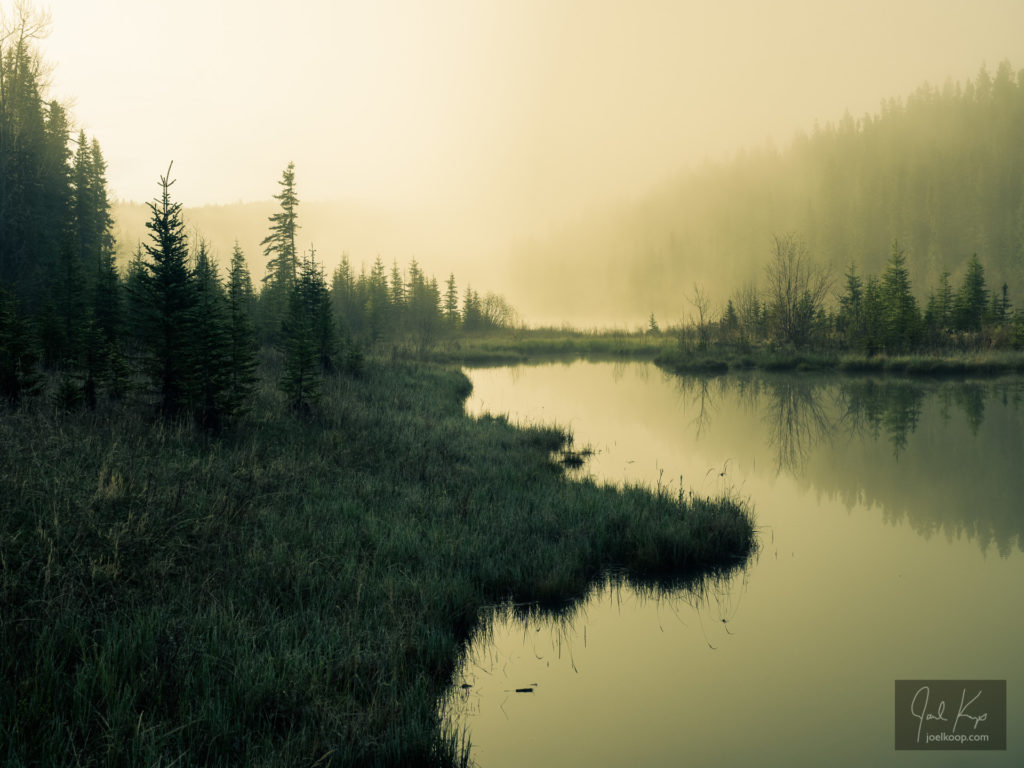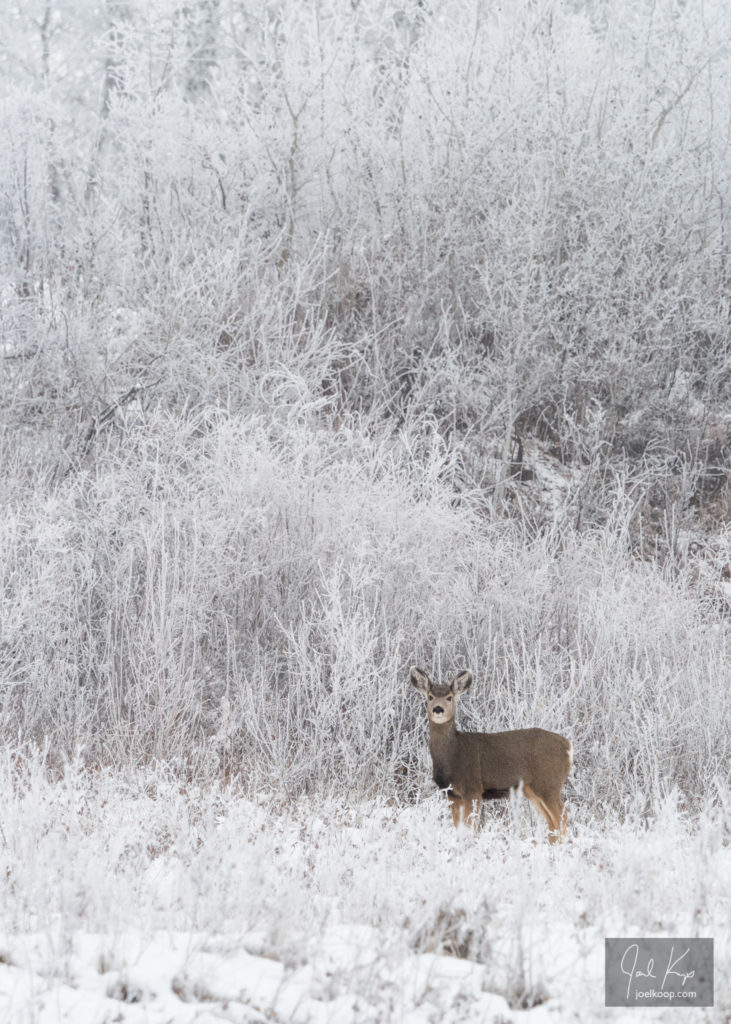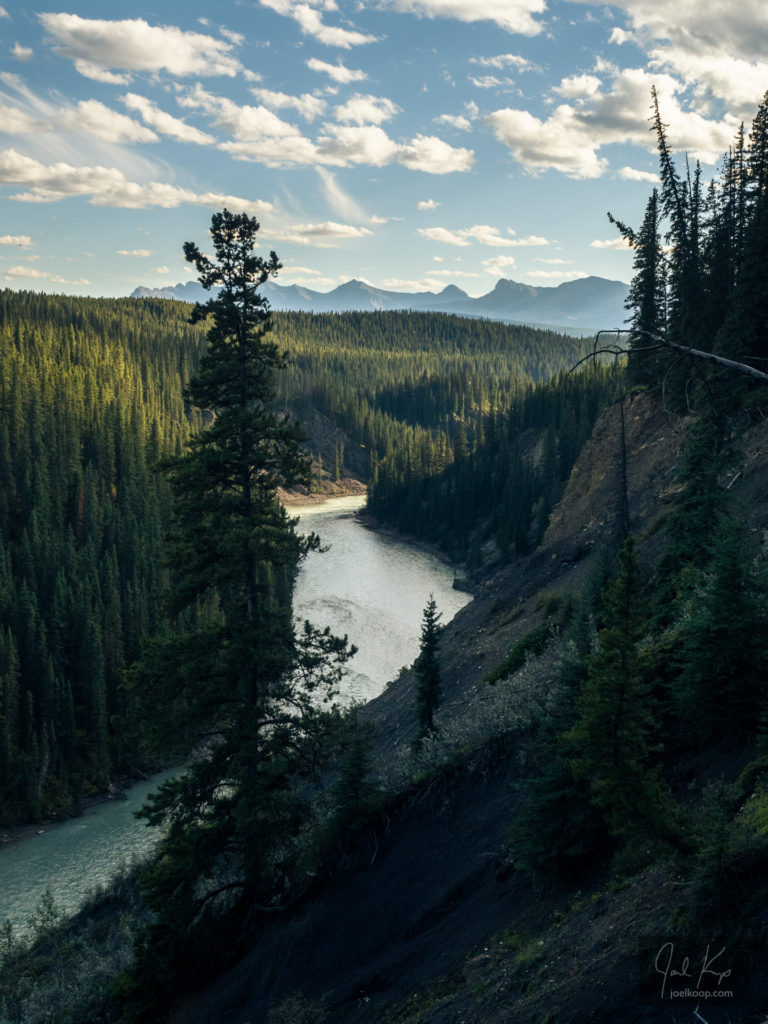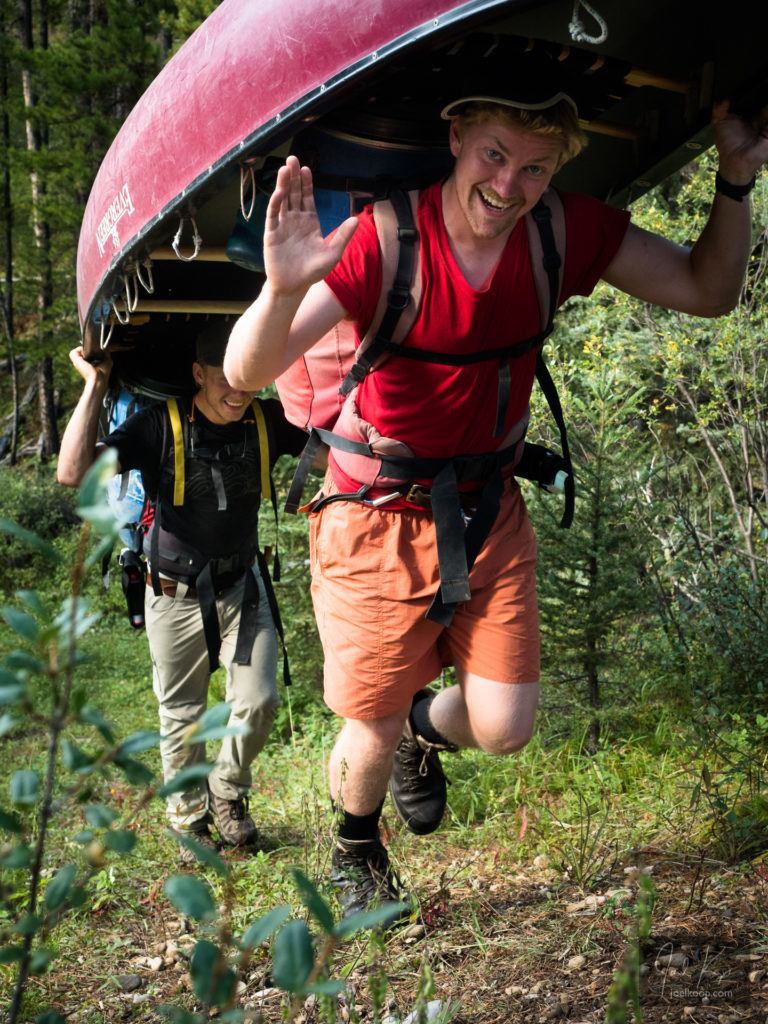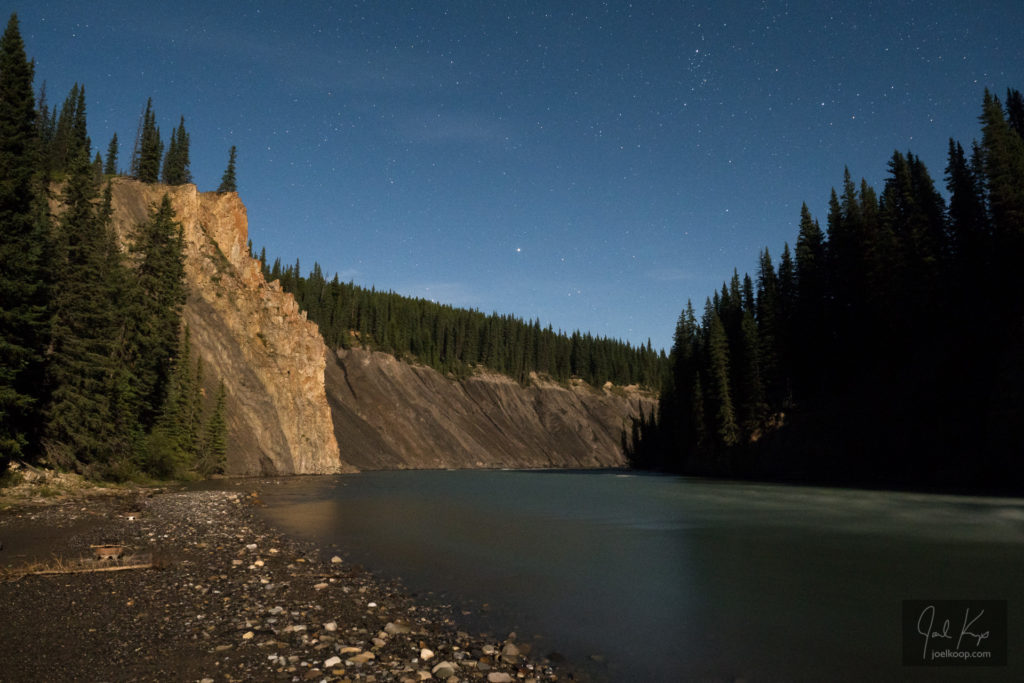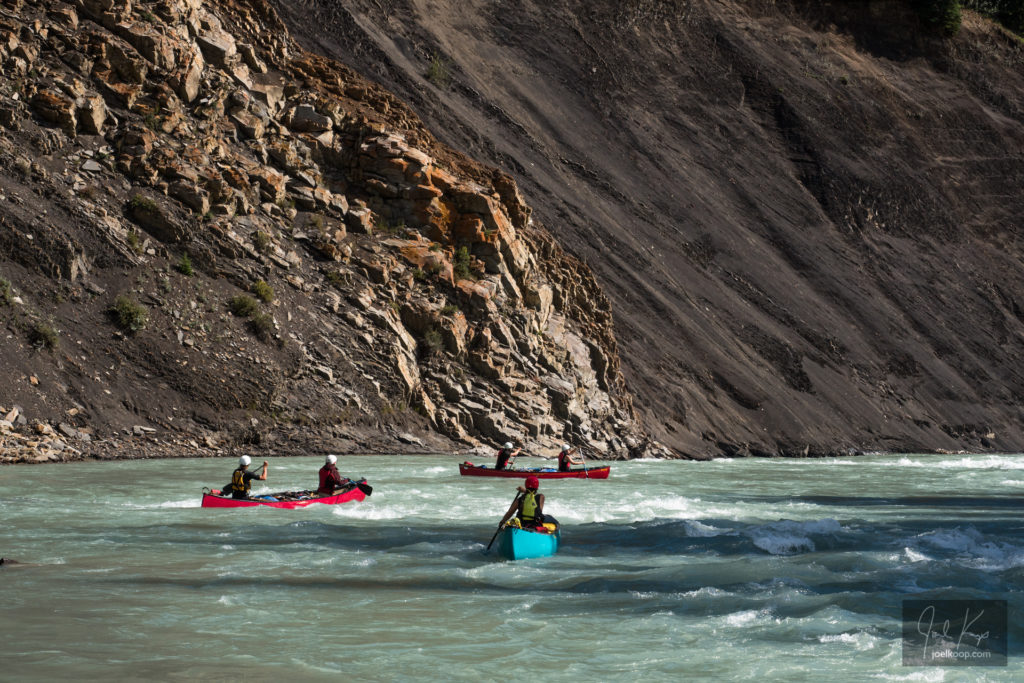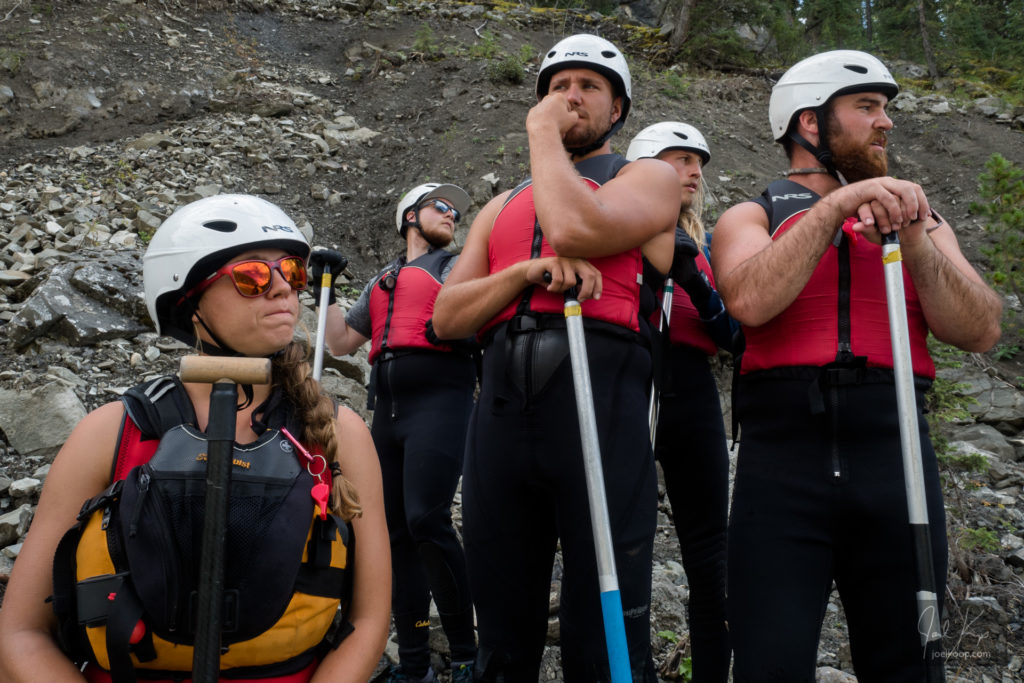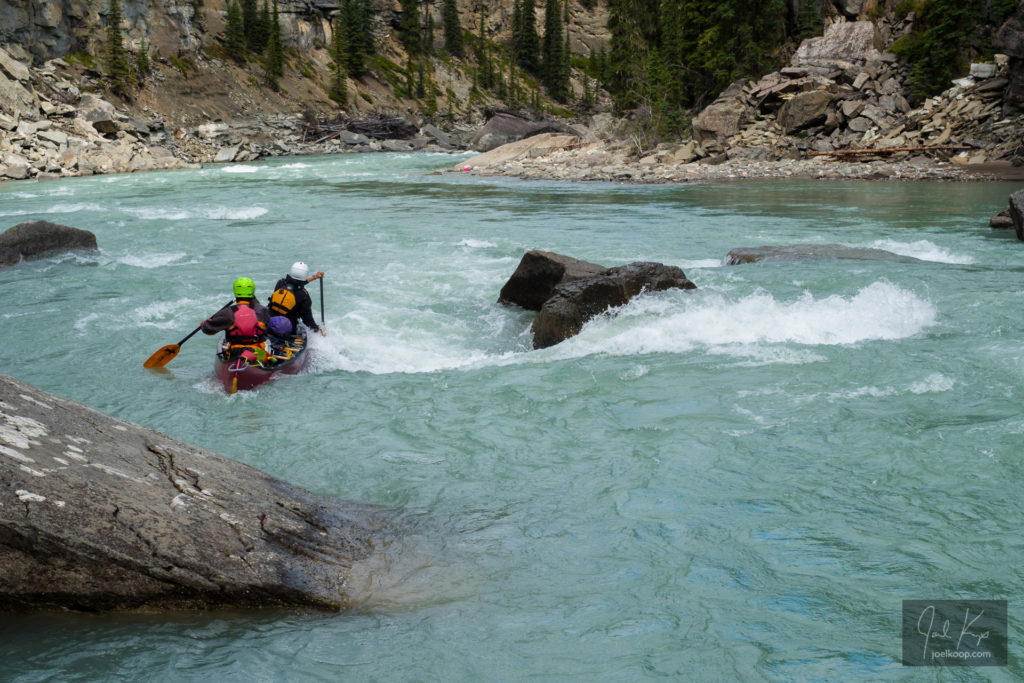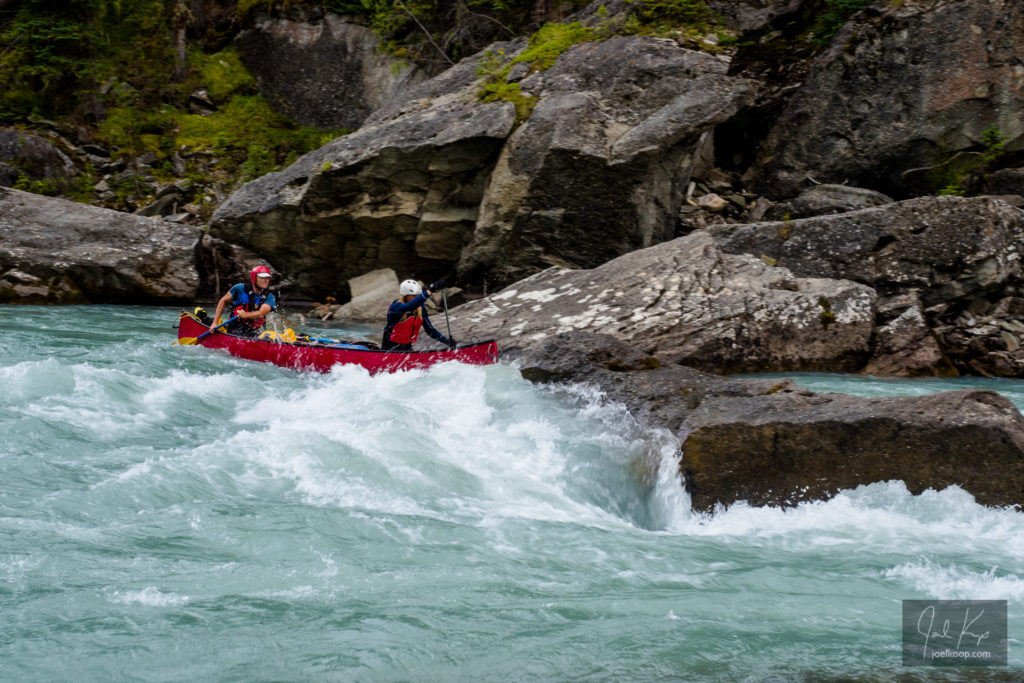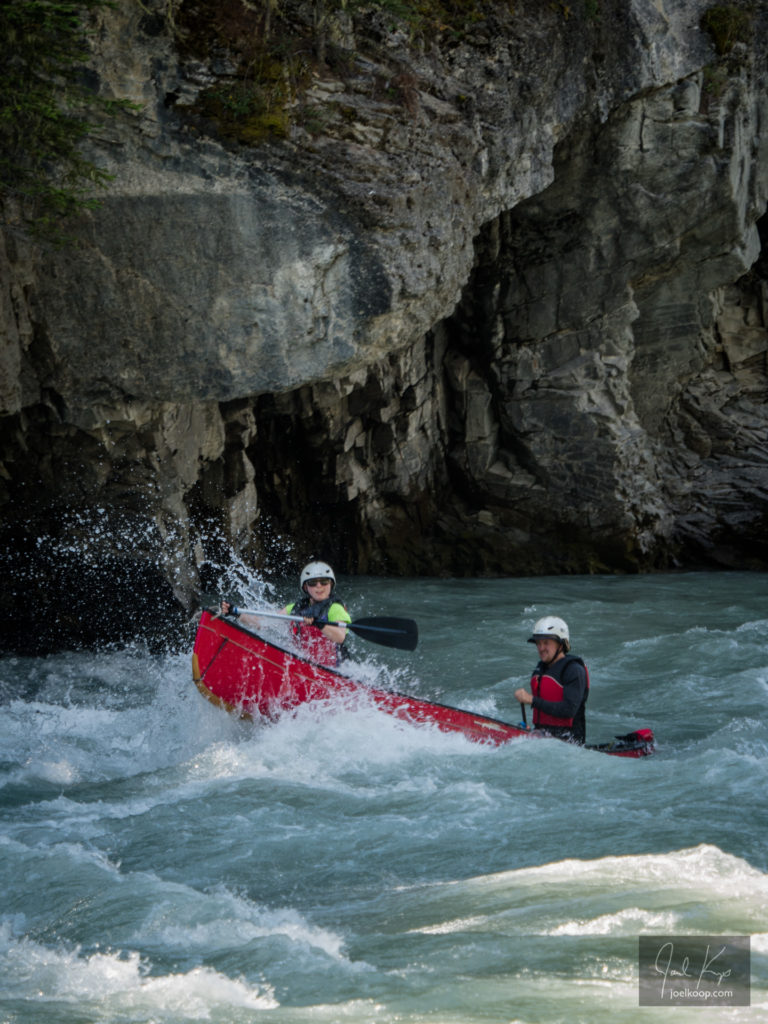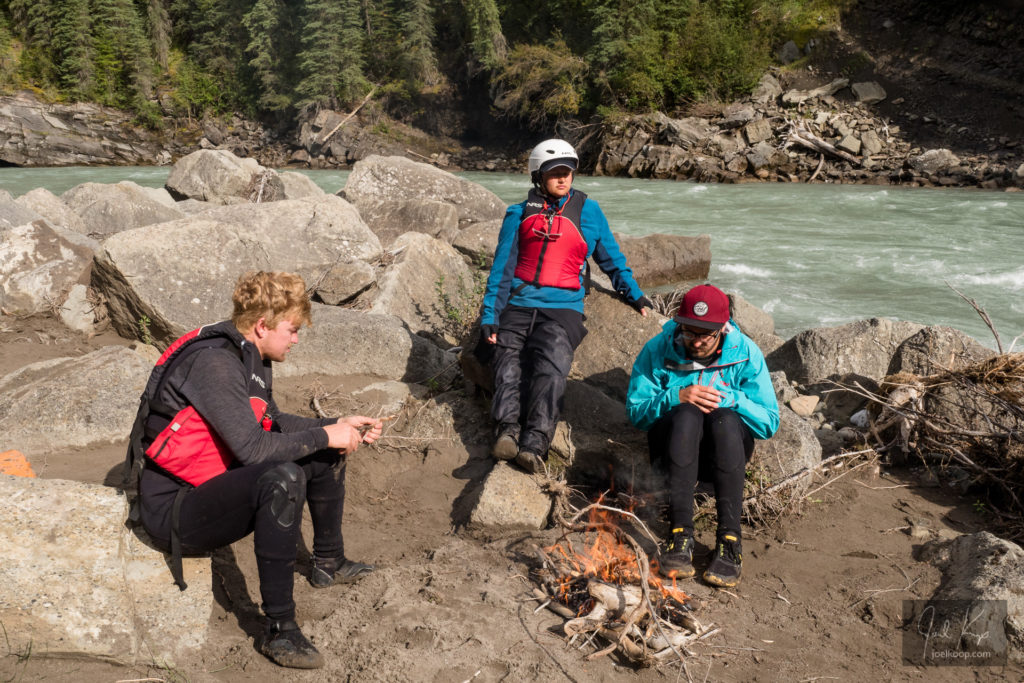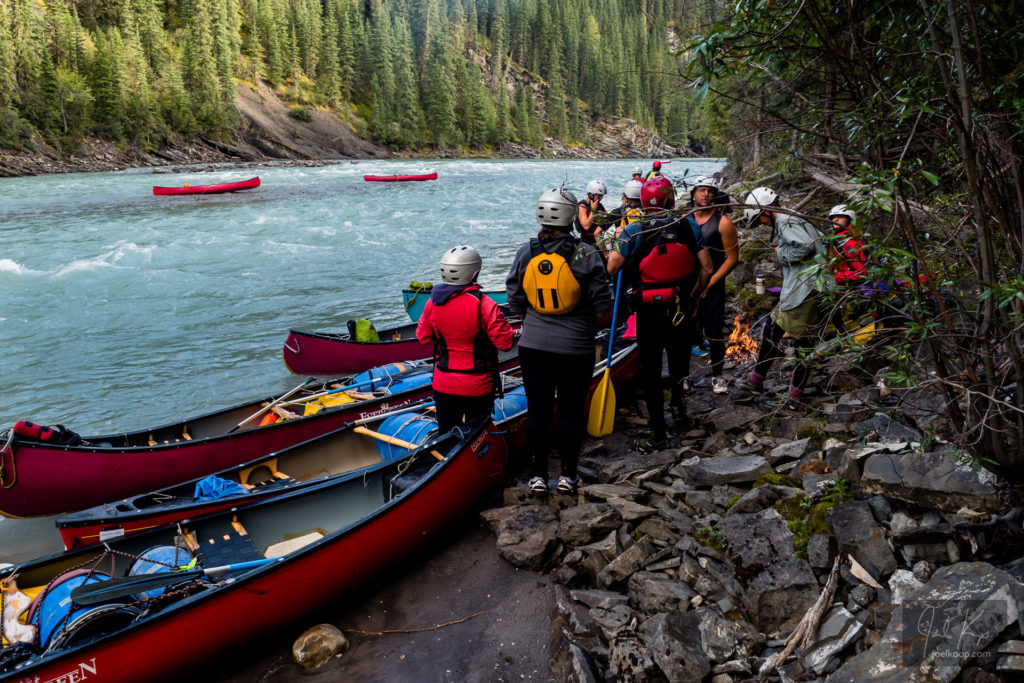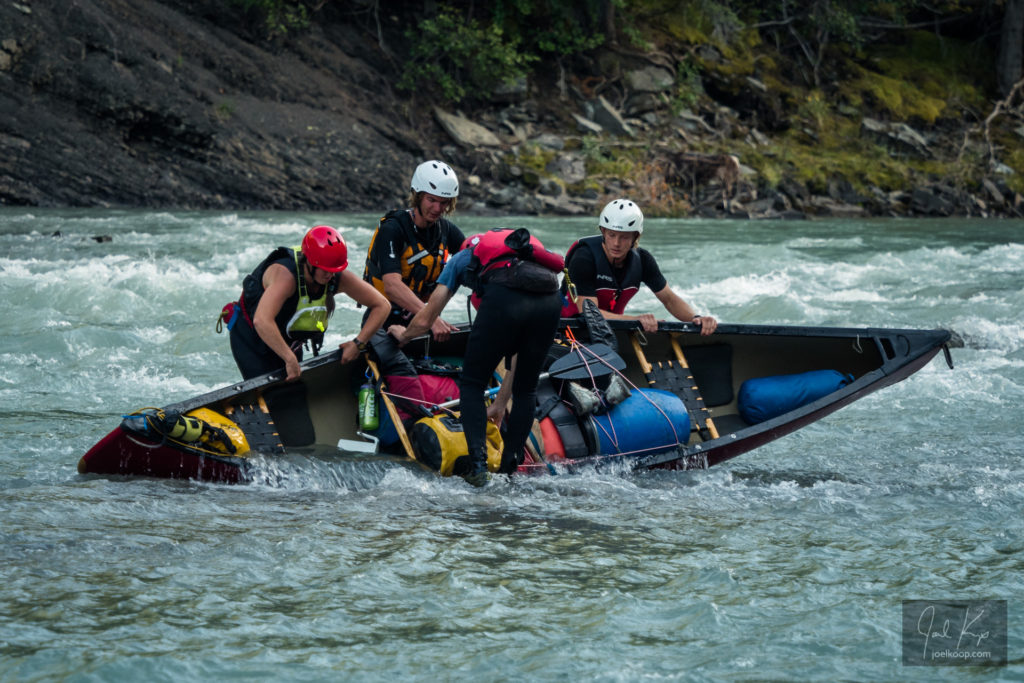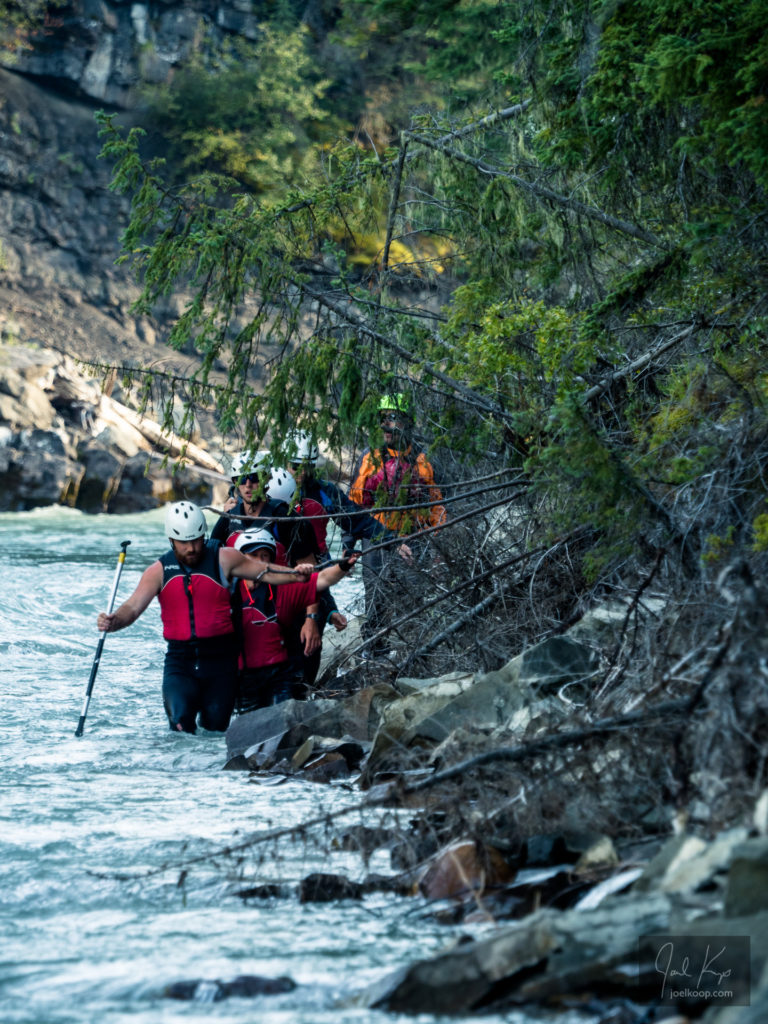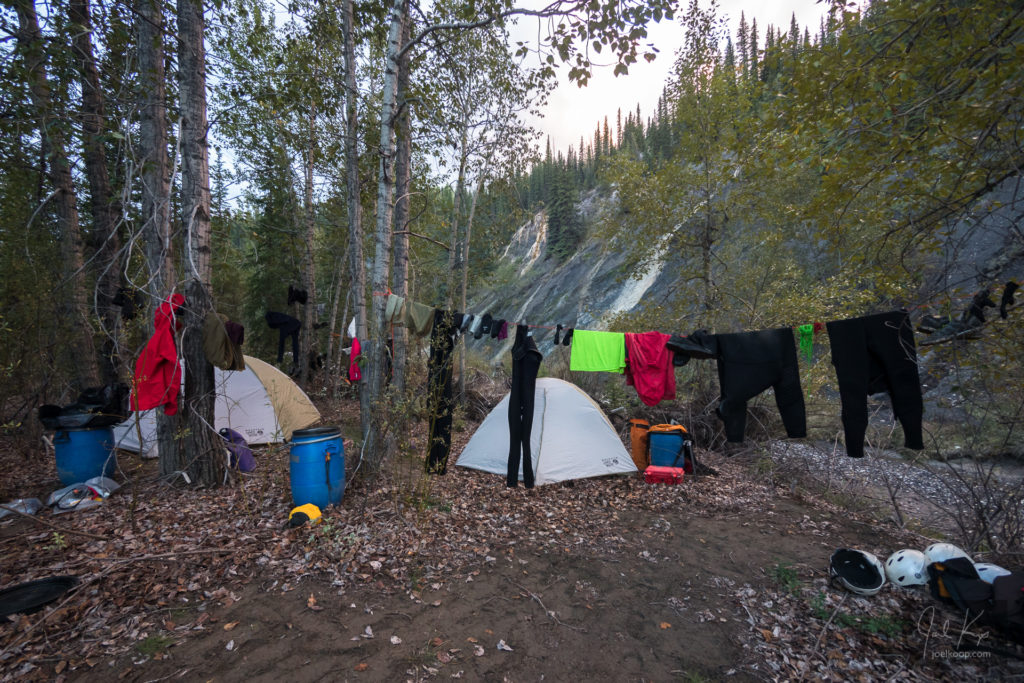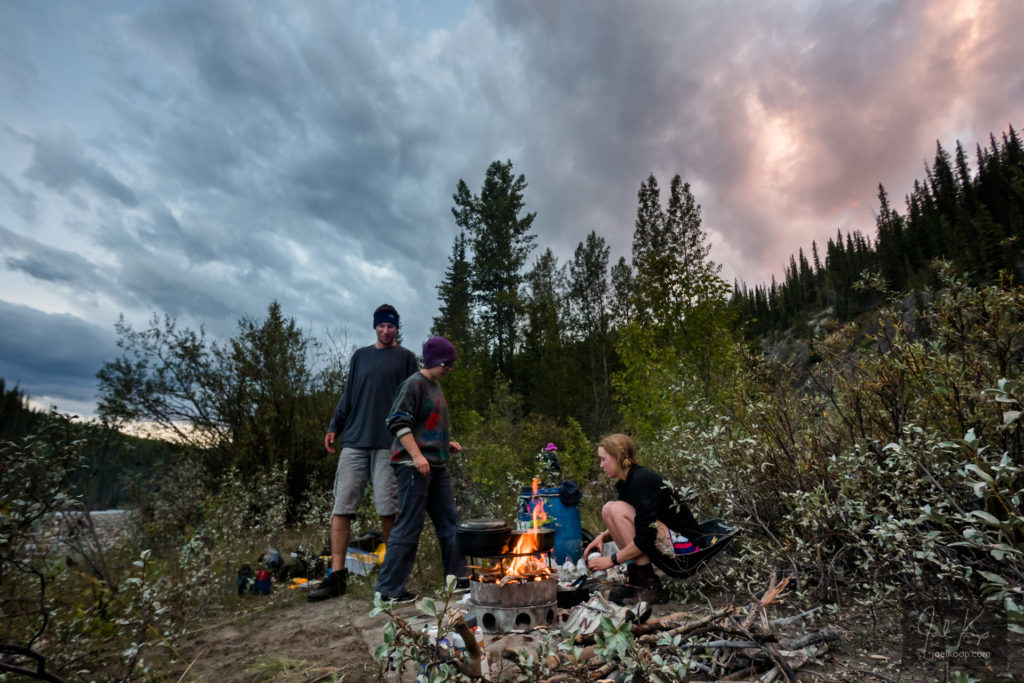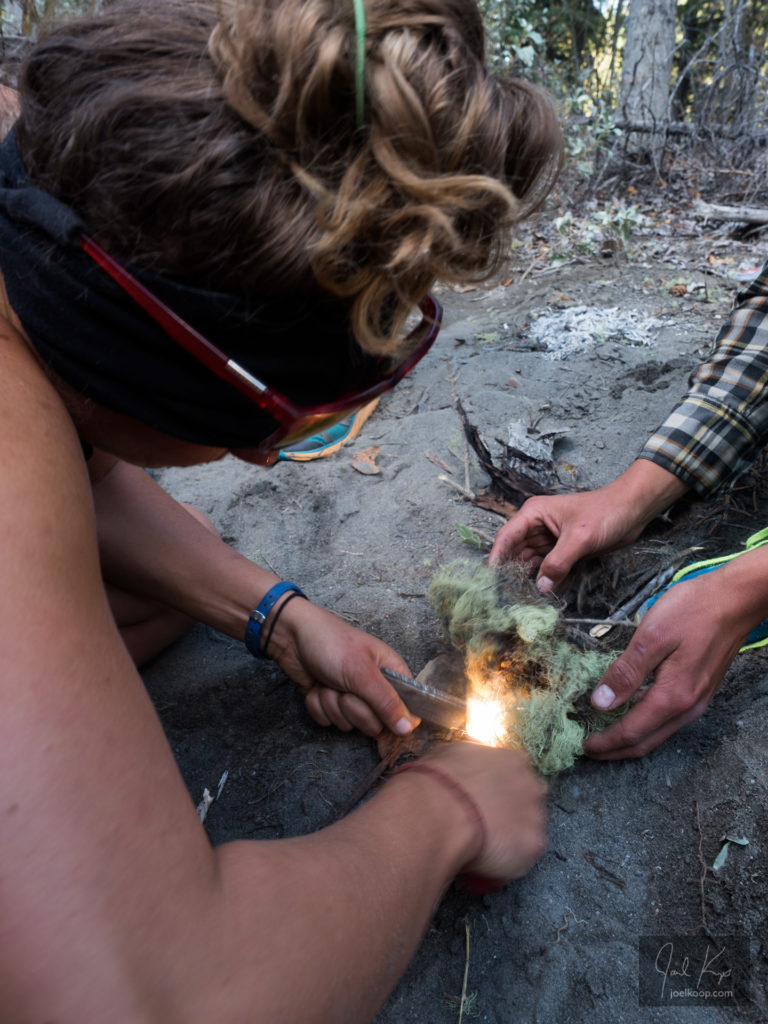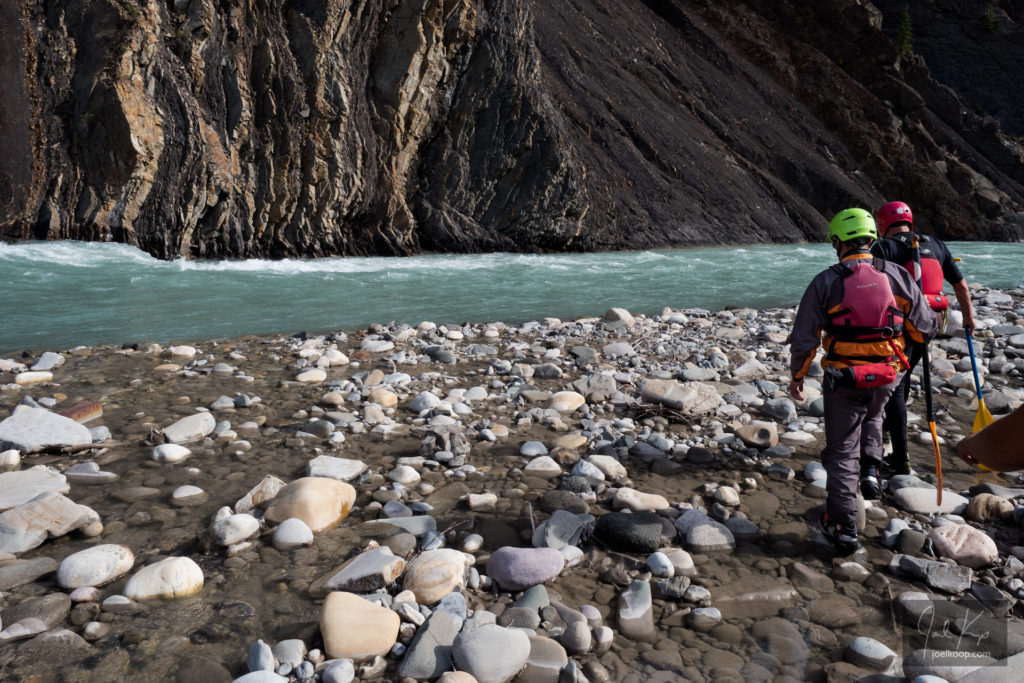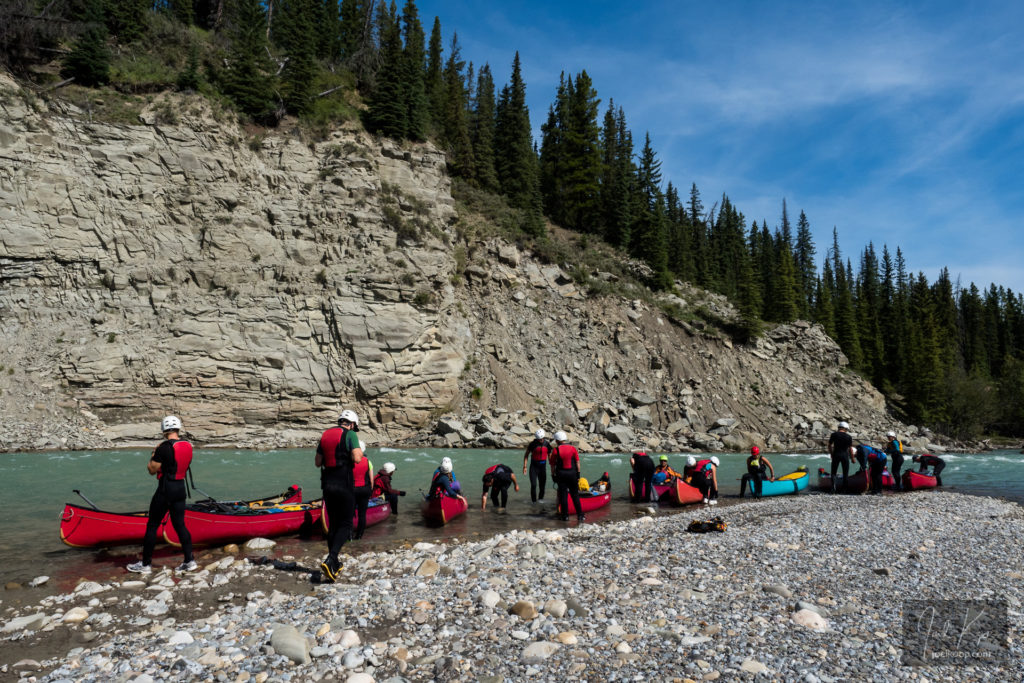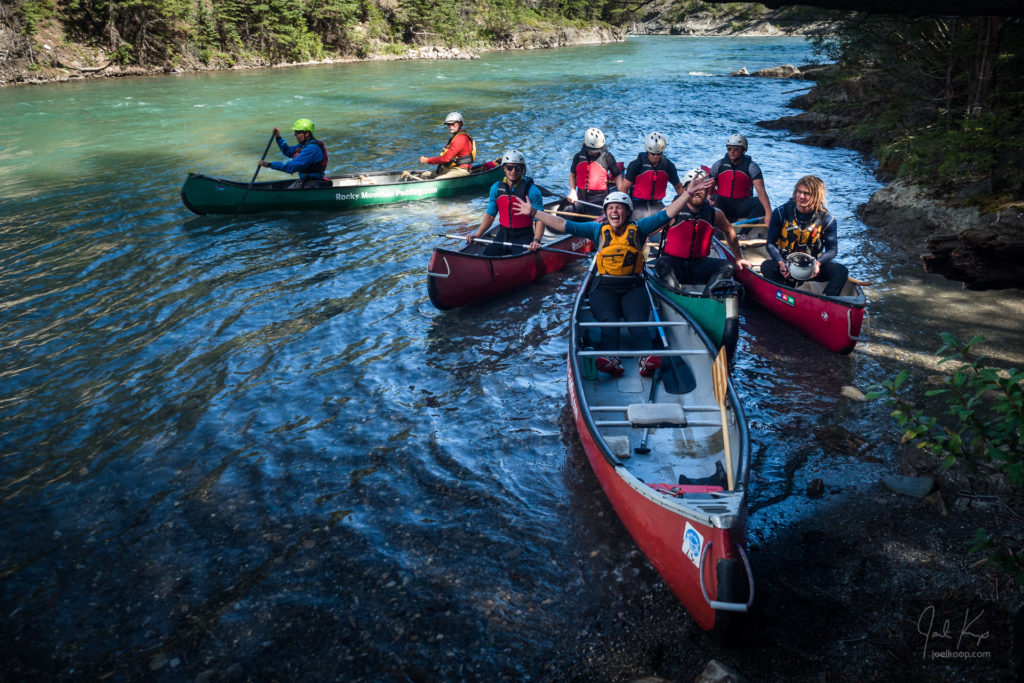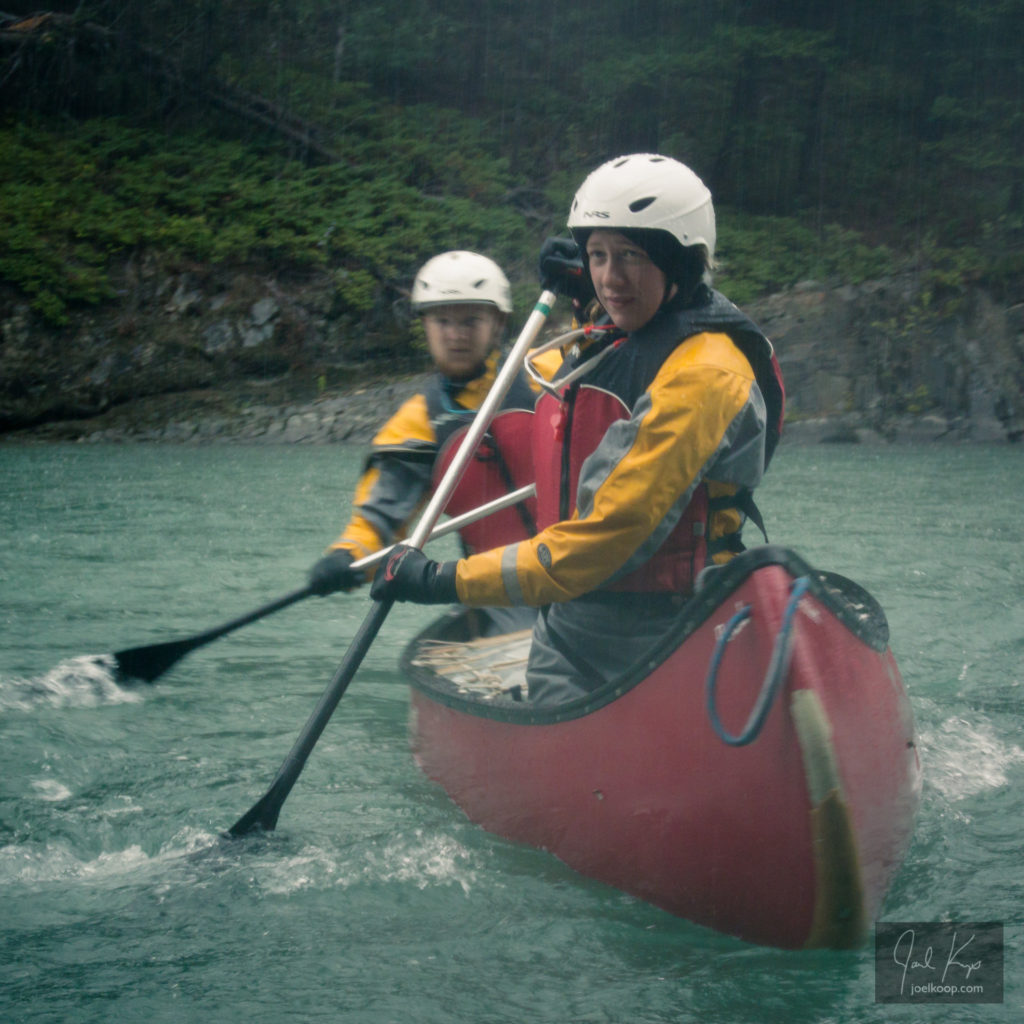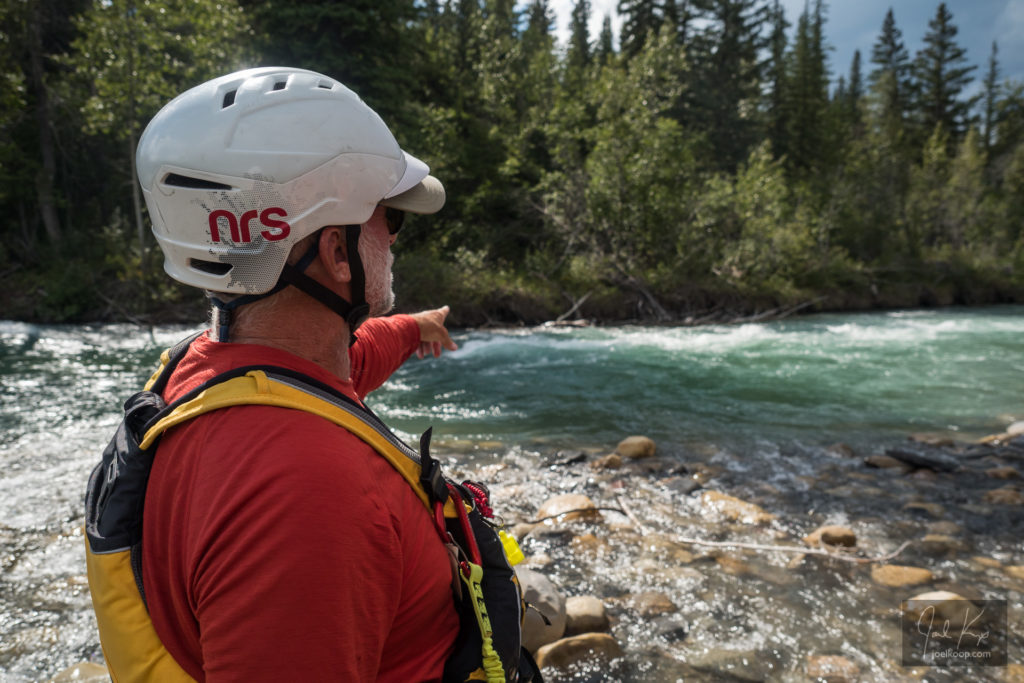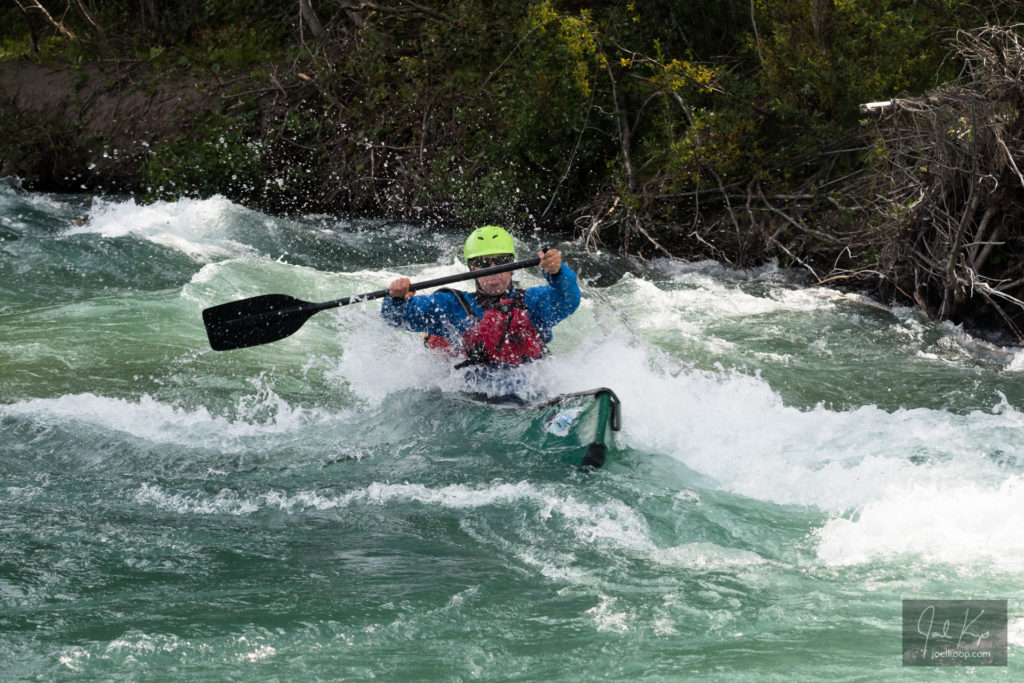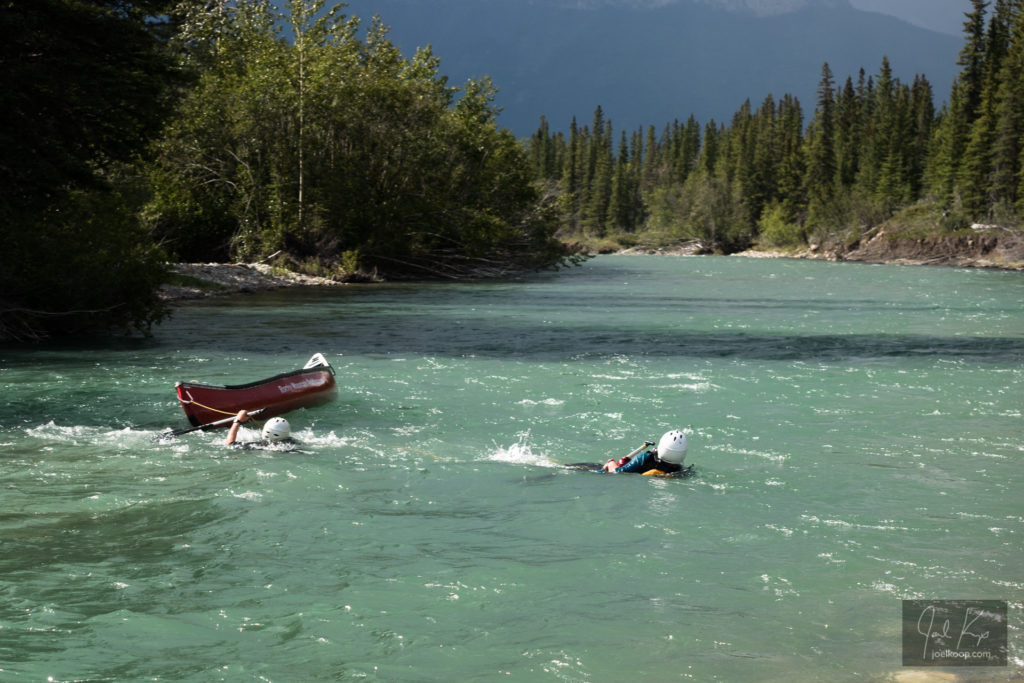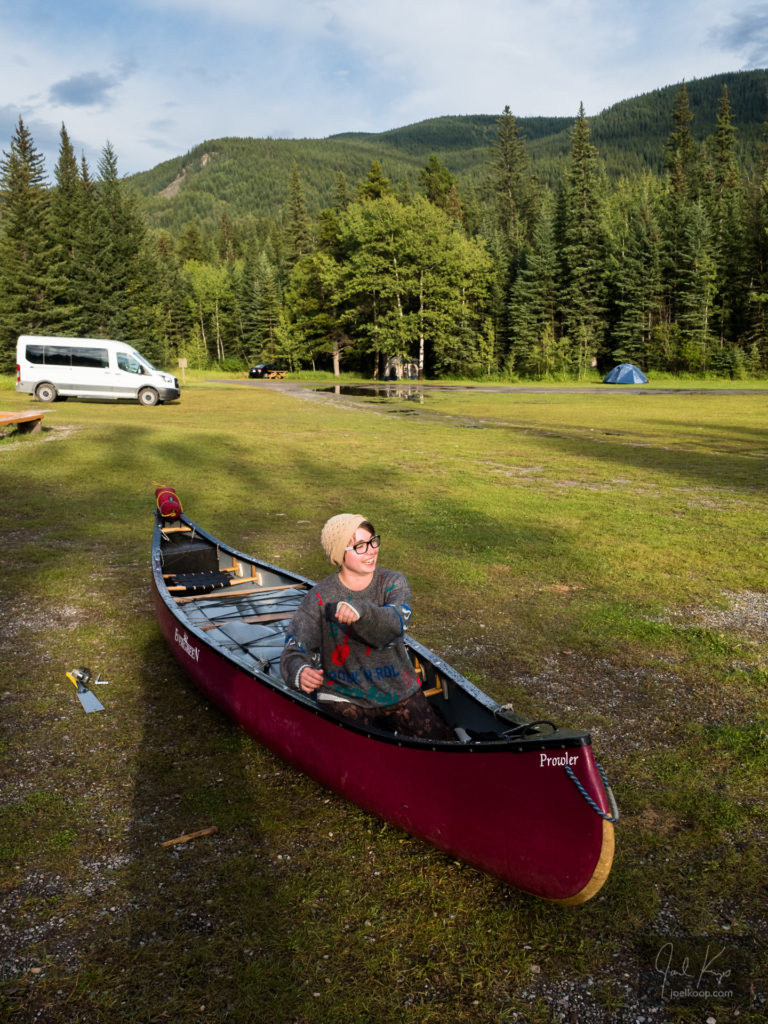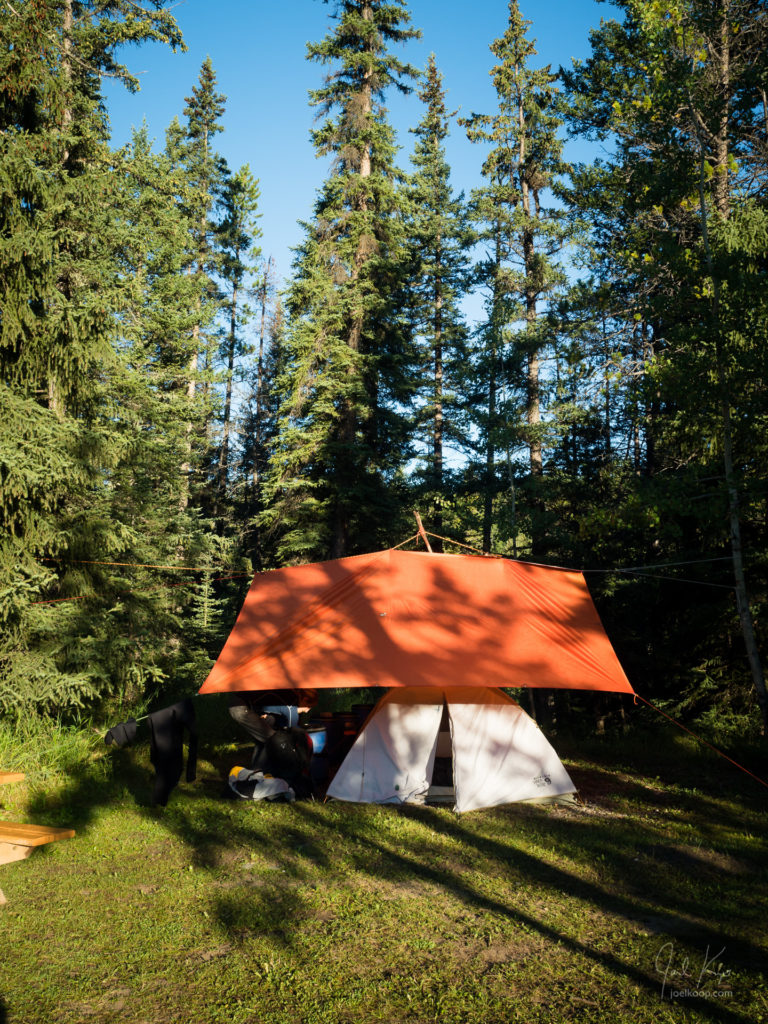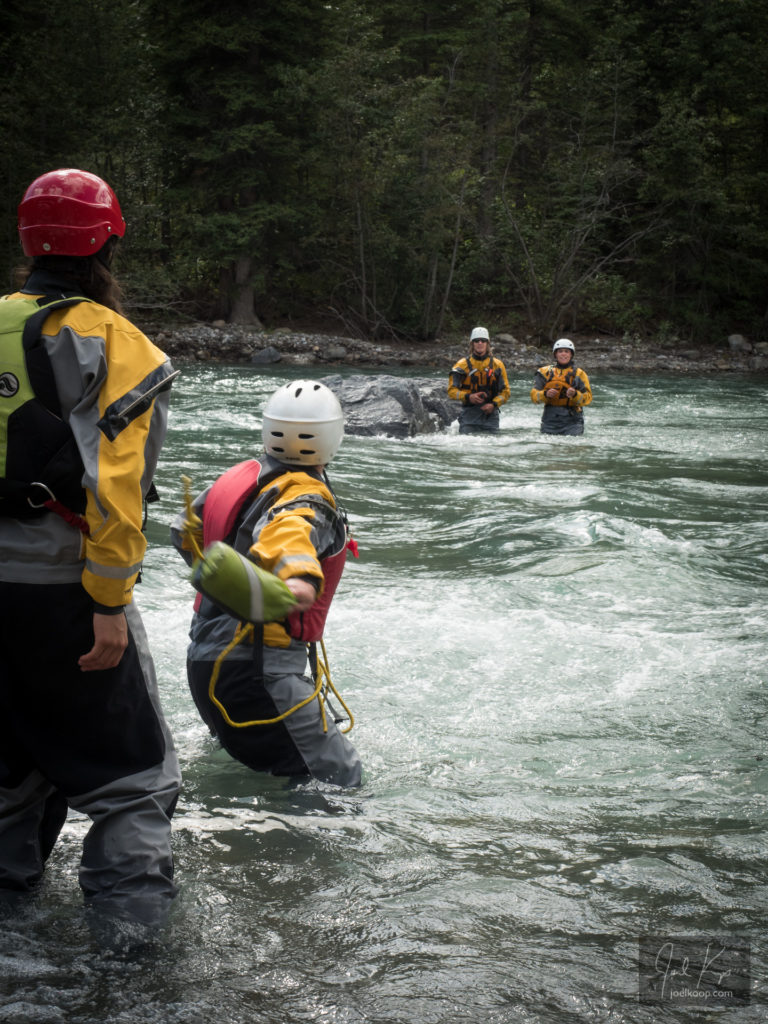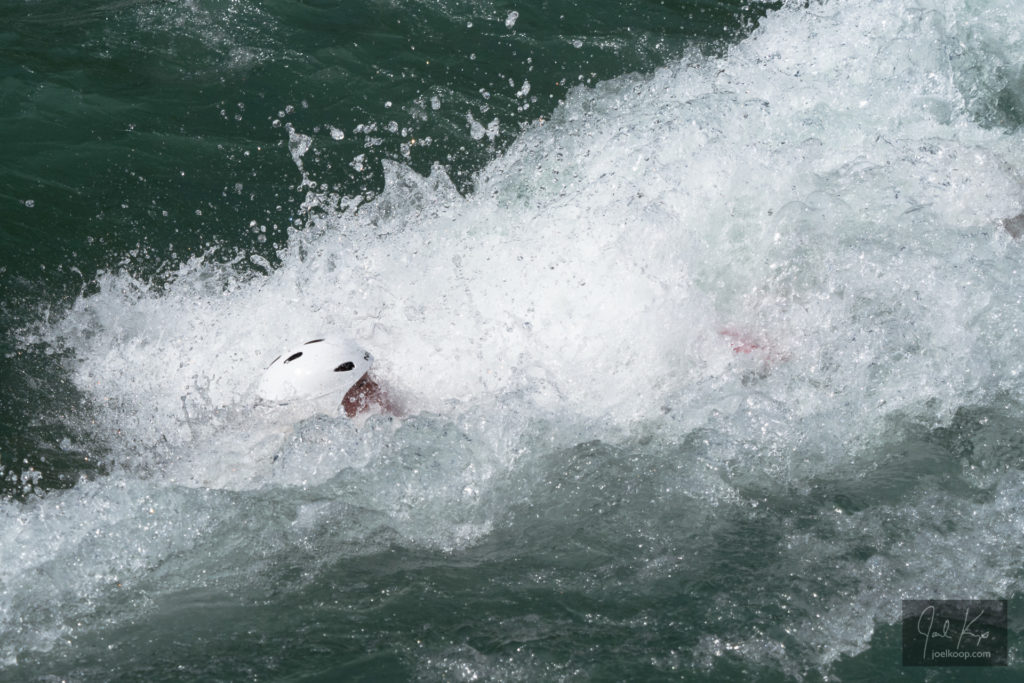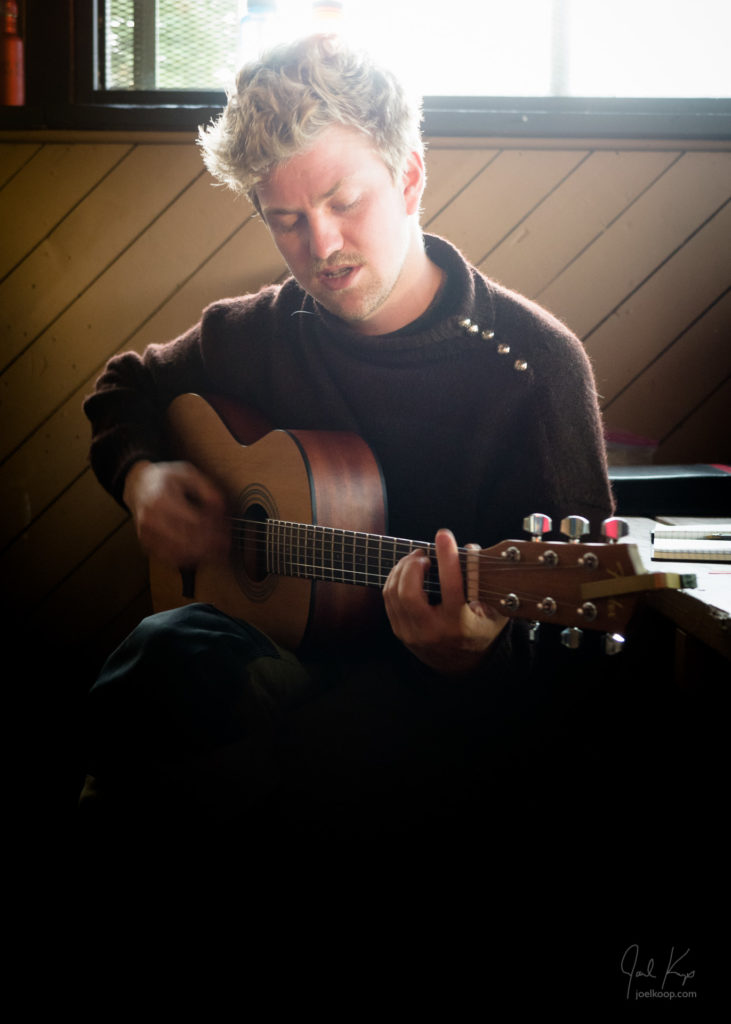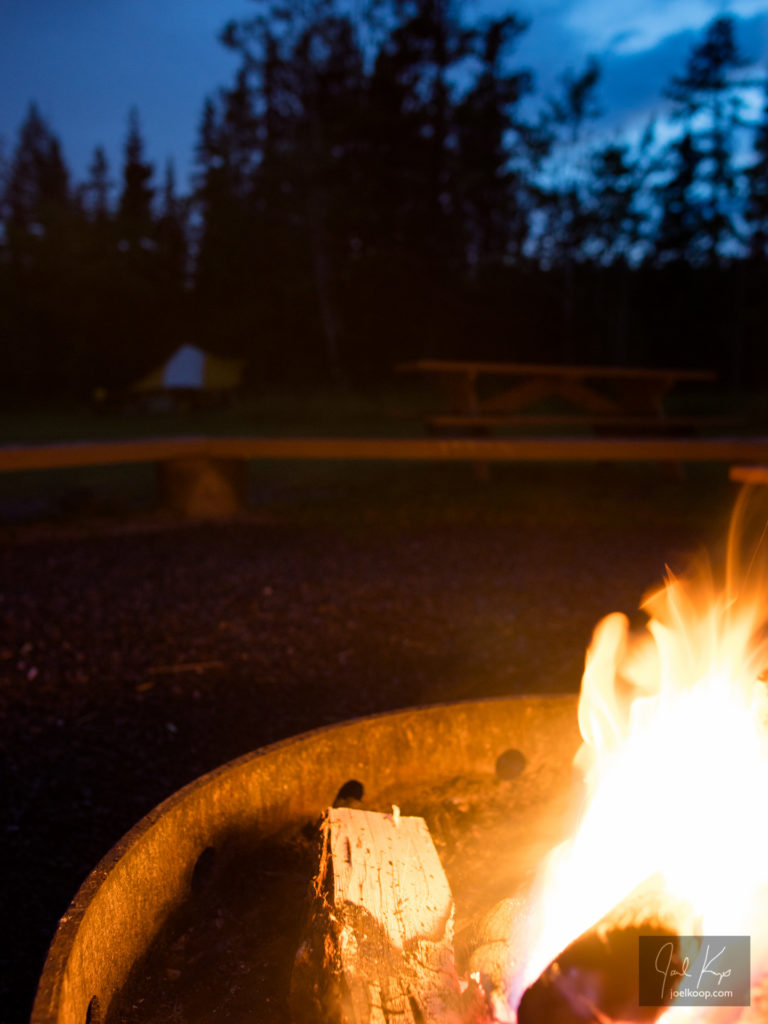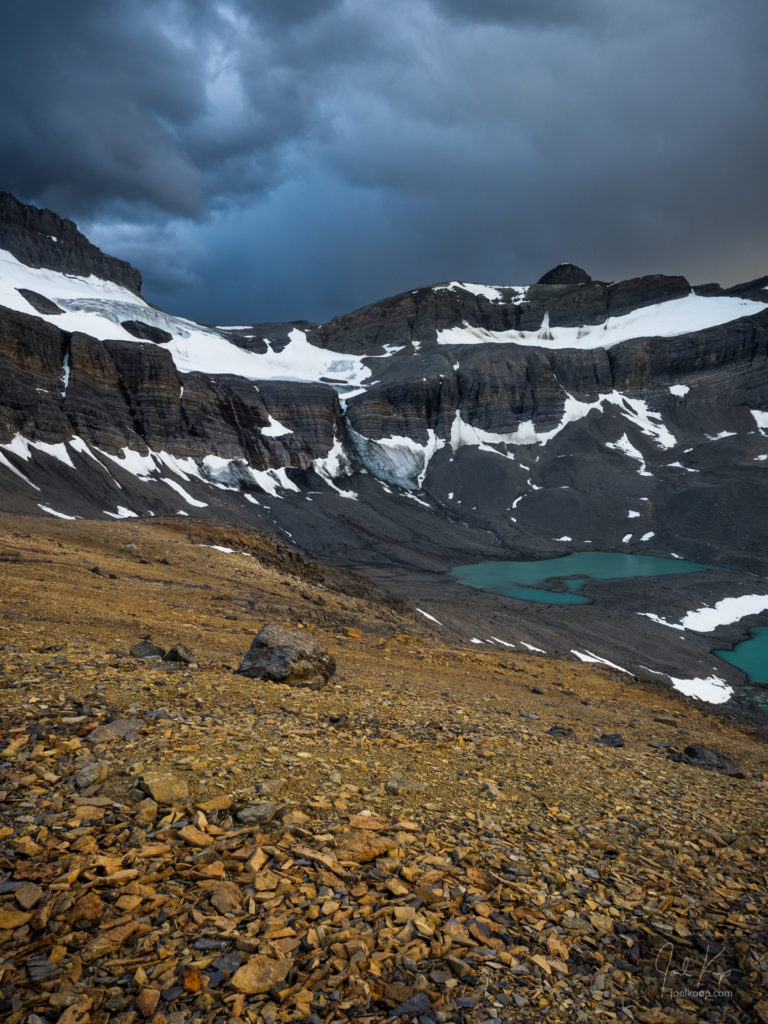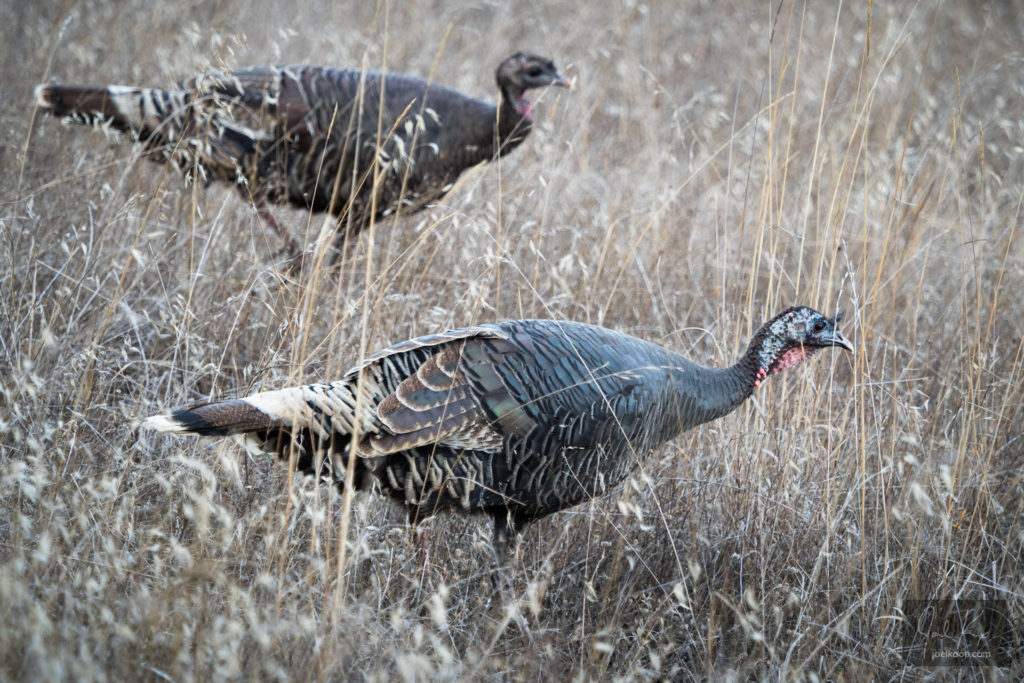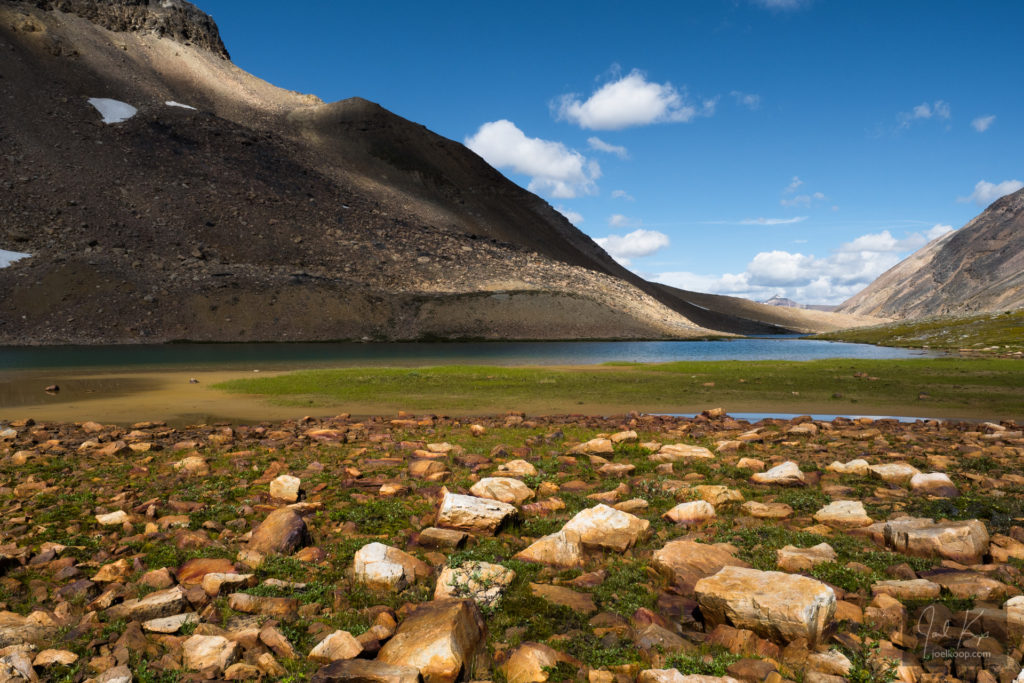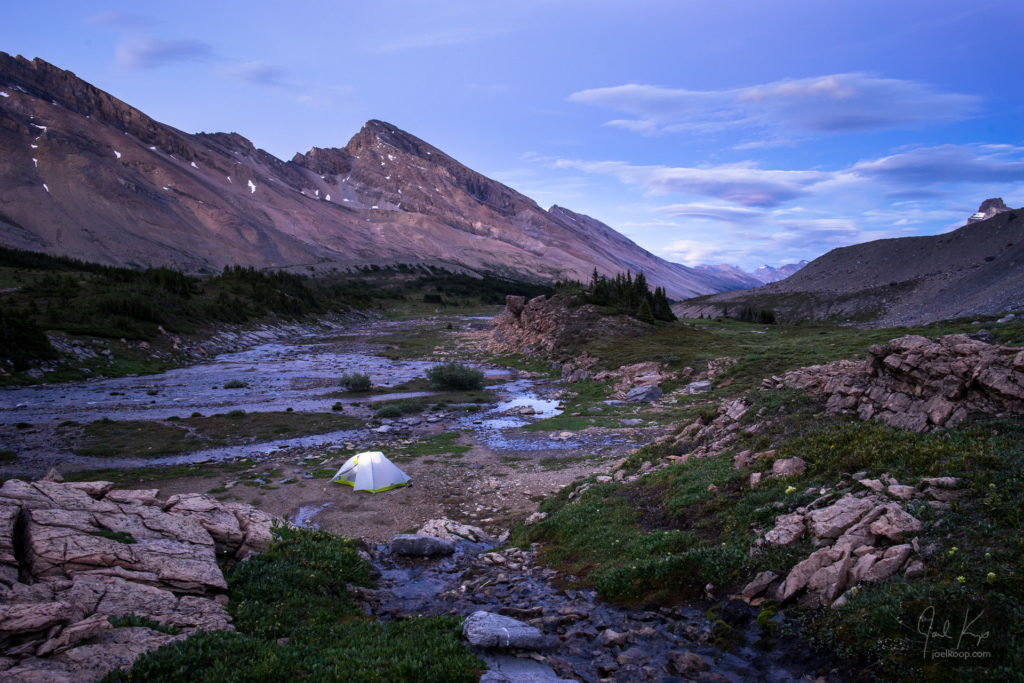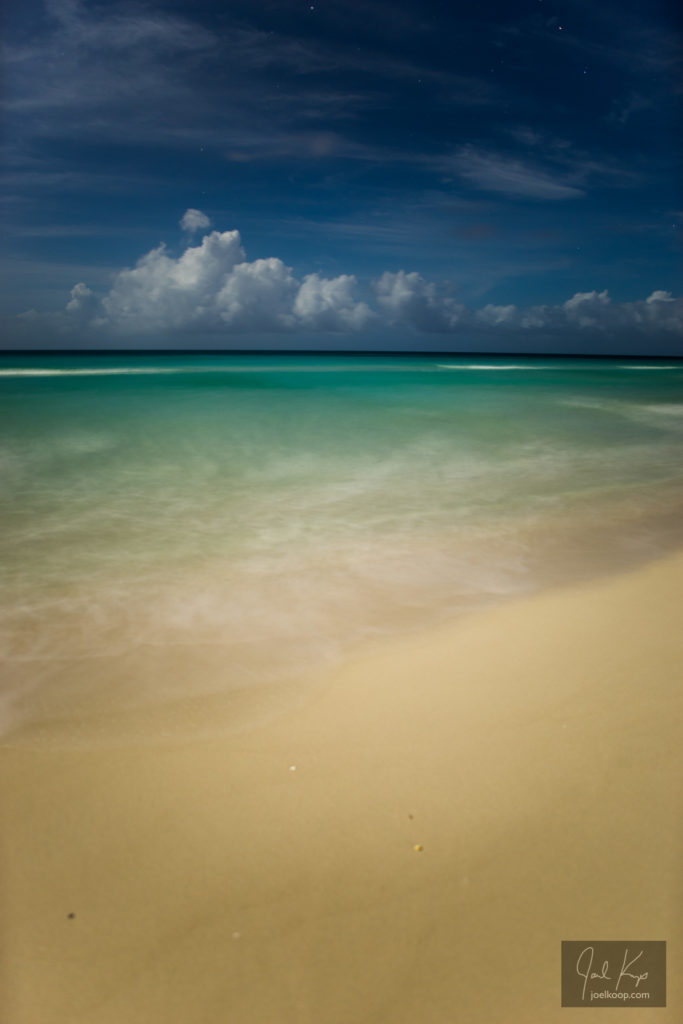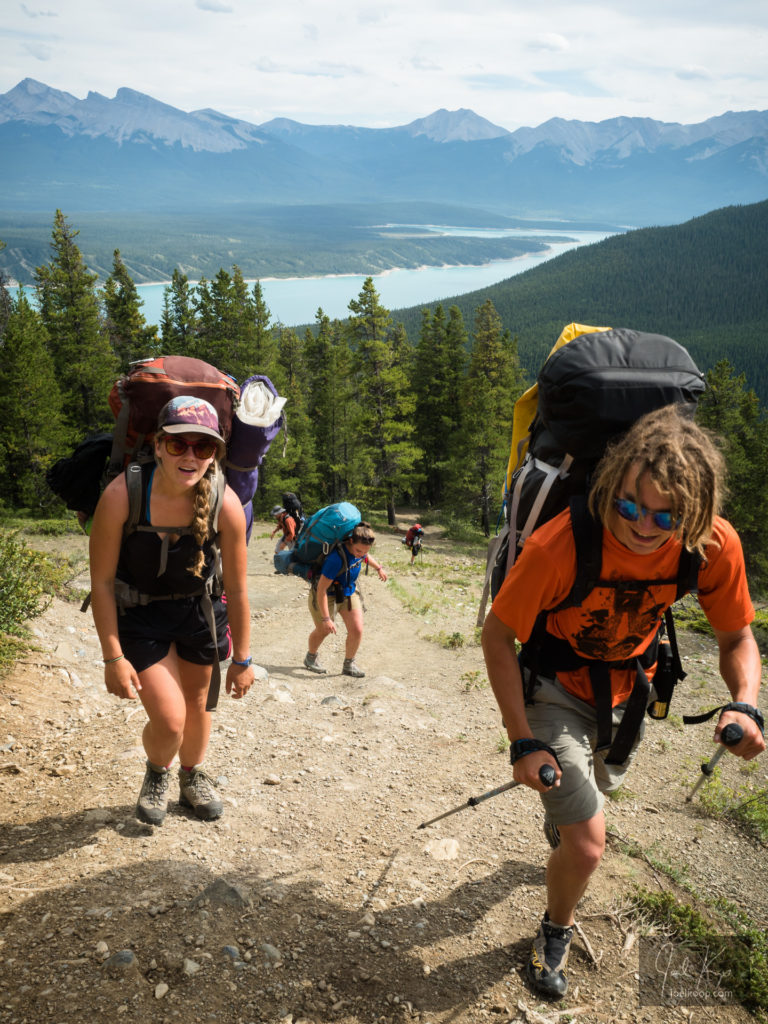
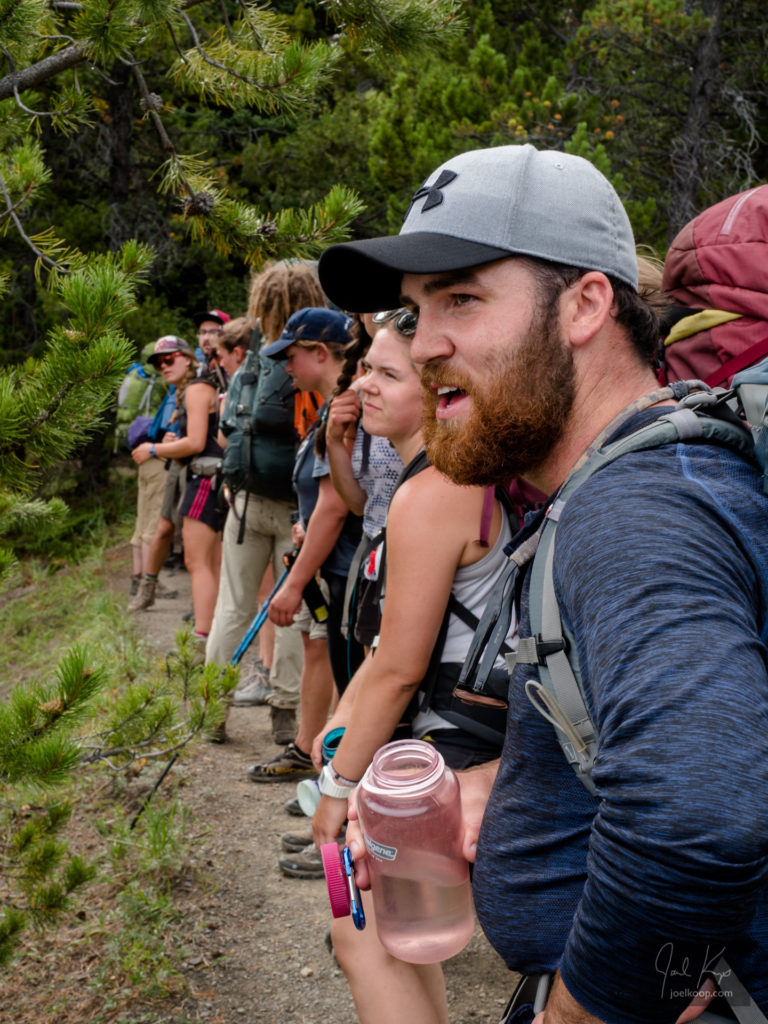

An eight day backpacking trip concluded our epic August adventure. After learning to do a bit of map and compass work, we set off all together on a sunny hike up to Allstones Lake. Our packs were heavy with food for our 8 day trip. The first part of the hike is well known and the trail well-travelled, so while we could learn how to navigate with map and compass, we didn’t need to. We got to Allstones with time to set up our tarps, filter some water, and make some supper before dark. Our bearhangs (rope systems to hang all our food between trees so bears can’t get at them) took a little longer and we finished them off in the dark with headlamps.
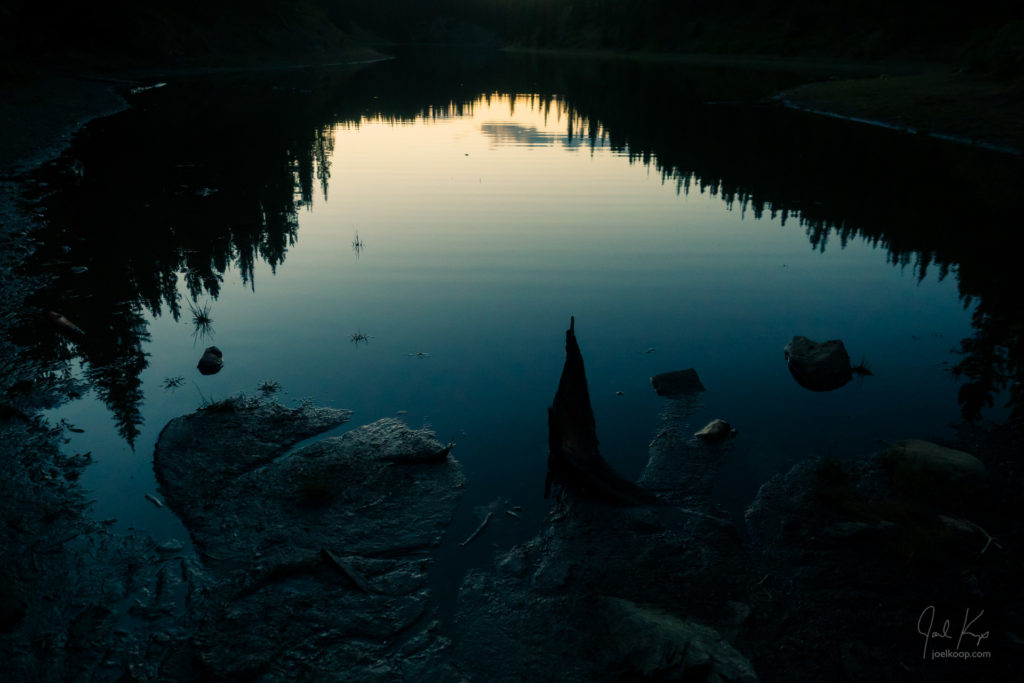
Then we all crawled into our sleeping bags under our tarps for what would turn out to be a miserable night. It was clear when we went to sleep, but a storm rolled in overnight and it started raining and blowing really hard. Our tarp was open at both ends and I was sleeping on the outside. My sleeping bag got pretty wet and I got pretty cold. This set the tone for the rest of the trip. The morning dawned, cold, dark, and rainy. We made breakfast, ate, and packed up as quickly as we could.

This was the first day our small group was alone. We were meeting up with everyone else at a pre-determined location on the map. There were no more trails and the trees were thick, making landmarking difficult. To add to this, the clouds were low, and often we couldn’t see any mountains, even when the trees thinned out. The rain was cold and constant, finding a way through all our waterproof layers. We quickly switched from navigating by landmarks to dead reckoning (going a specific compass direction). We tried to gauge our distance by the number of drainages we passed through, but we didn’t know our exact elevation and the number of drainages on the map varied depending on the elevation.

We debated where we were quite a bit, pointing out hills in the distance, and the direction of creeks we crossed. Eventually we got to an open mountainside where we could see more than one landmark at once. We debated, ended up with two possibilities of where we could be, with most of us being pretty sure of one. But on a day when we were all cold, wet, and miserable, with darkness starting to loom, we thought we better be sure. We took out the GPS and confirmed our guess. We were where we thought we were, but we still had a ways to go. We eventually found the right drainage to walk down, followed the swampy, willowy valley, and ended up close to our campsite. We were all soaked, although hiking had kept us warm up to this point.

As we got into camp though, the cold started creeping in and we started slowing down. As we tried to set up the tarp with shaking, numb fingers, others in our group searched for less-damp wood with which to start a fire. Nothing was dry. Through chattering teeth, we made sure everyone had their tasks, and we set about doing the chores of the evening. Somehow we managed to get the tarp set up, a fire made, and supper cooked. We changed into drier clothes and tried to warm up.

By then it was dark, and we needed sleep. We crawled into our sleeping bags and slept extra close that night. Morning came. It was still drizzling, on and off. Most of our gear was wet, but there was nothing to be done about it, so we packed up and headed out. Our route for the day was pretty clear – we would follow a valley through a low pass, and then once the ground leveled out we would head straight north. The day was a little less wet than the day before, our route a little clearer, and our group’s spirits were high. We even saw blue sky for a few minutes before it clouded over again.
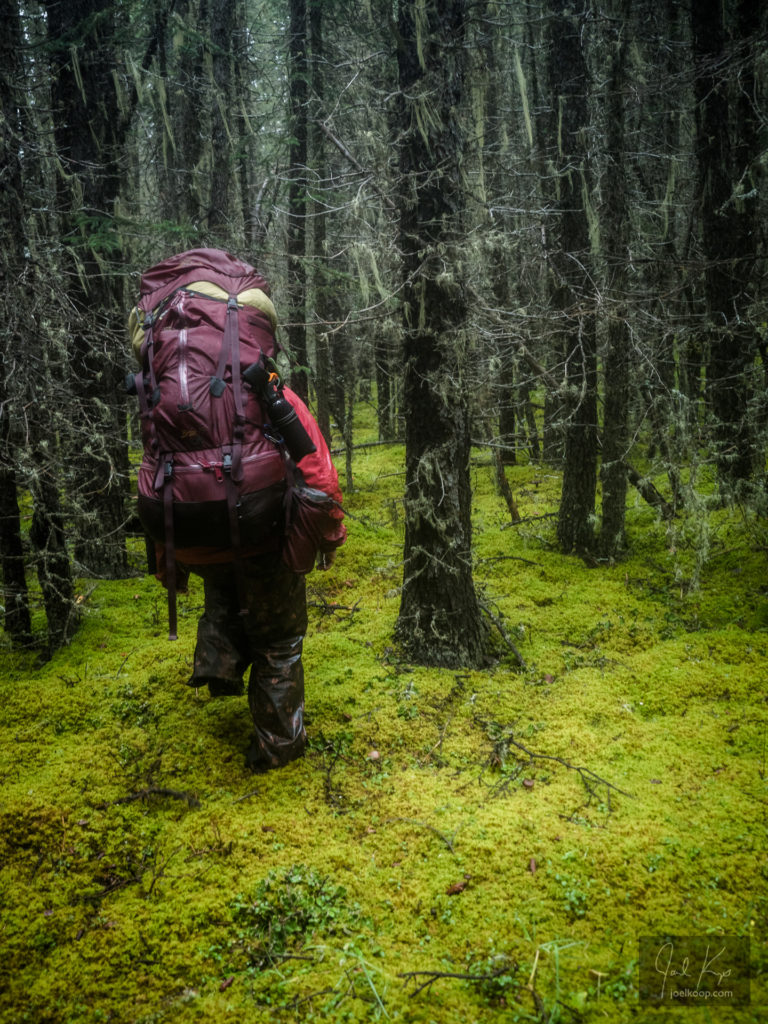
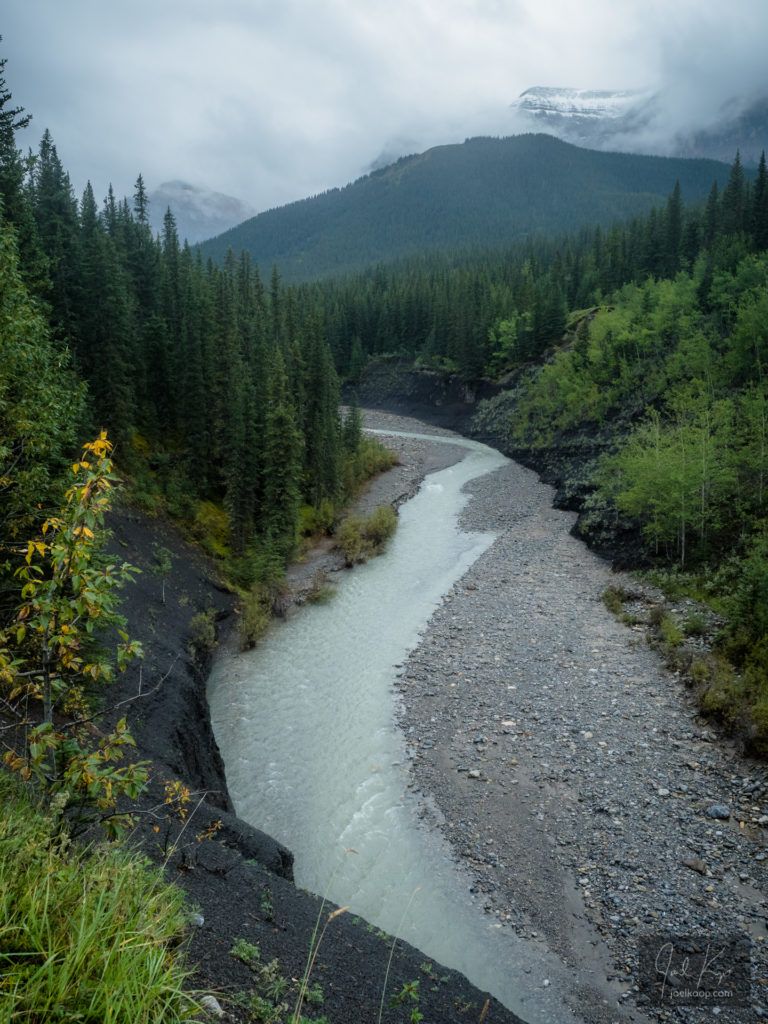
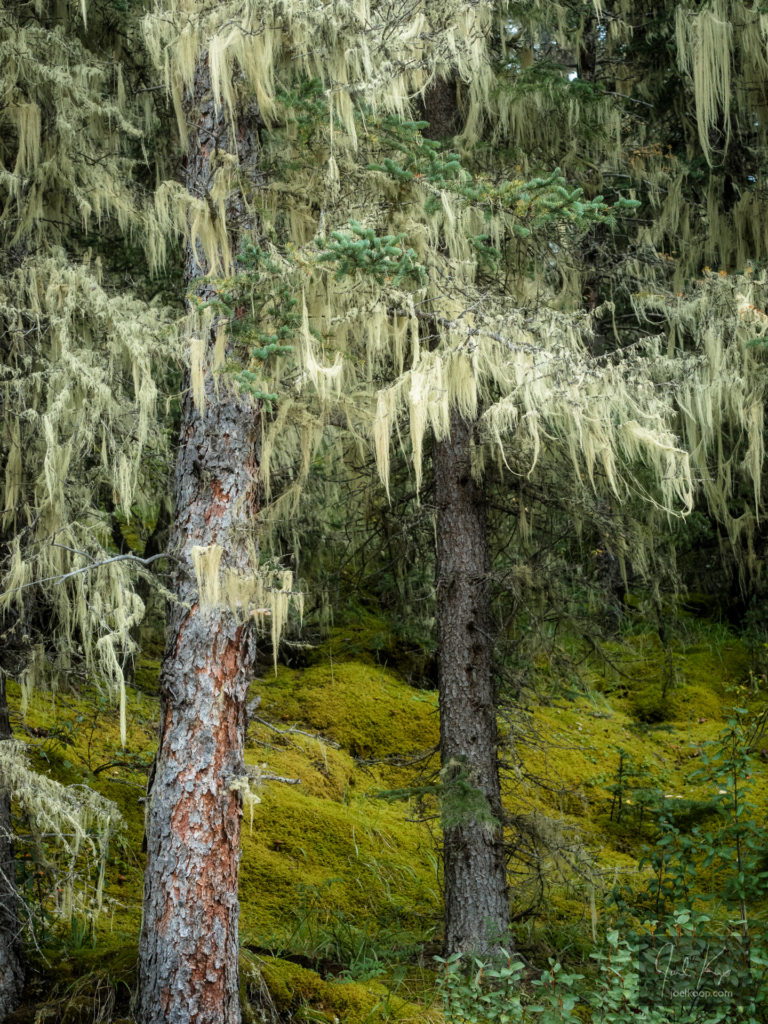
This time we were one of the first groups to camp, and we had a little bit of time to relax in addition to all the evening chores. We got our tarp set up early with drying lines underneath. There was a good gravel bar for a kitchen beside the Bighorn River. The sun came out a bit that evening, and we found out we would have a layover day to dry out our gear. We went to bed happy, if not especially warm.

The next day was full of drying gear, learning to identify plants, journaling, and talking with other groups we had barely seen in a few days.

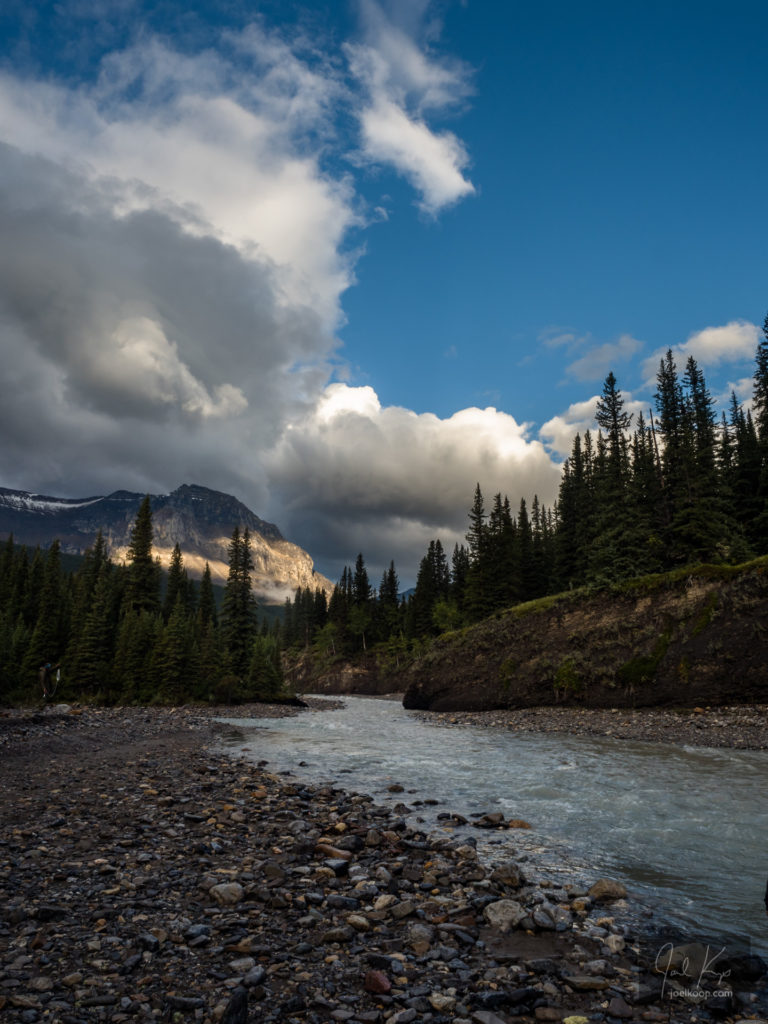
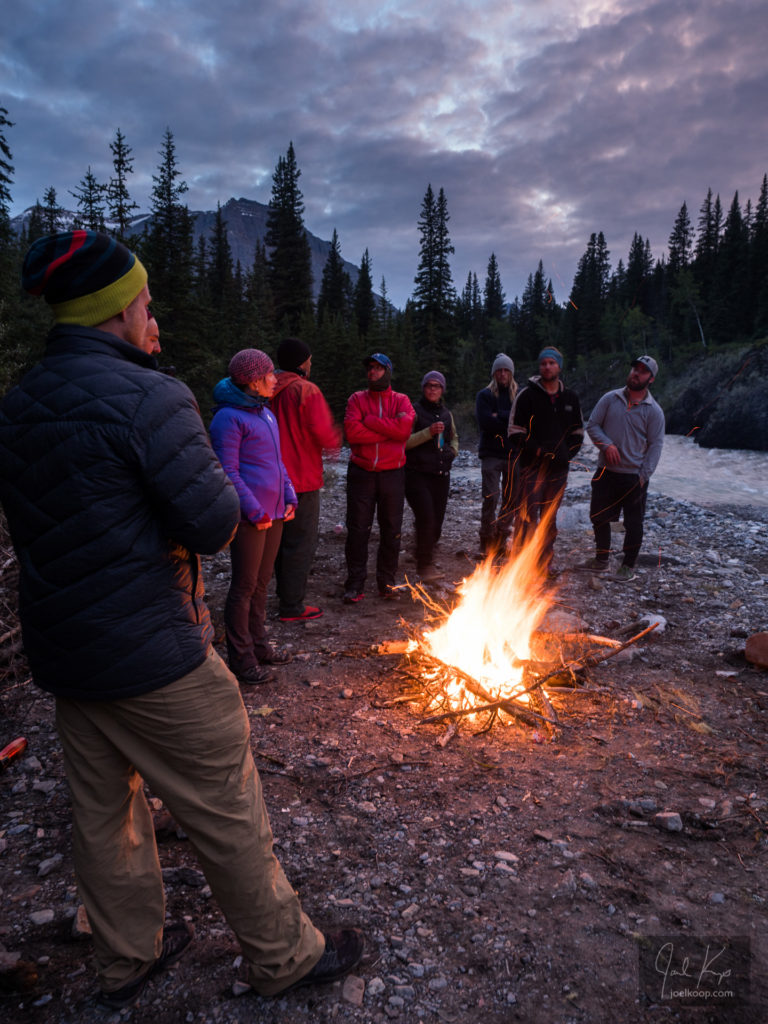

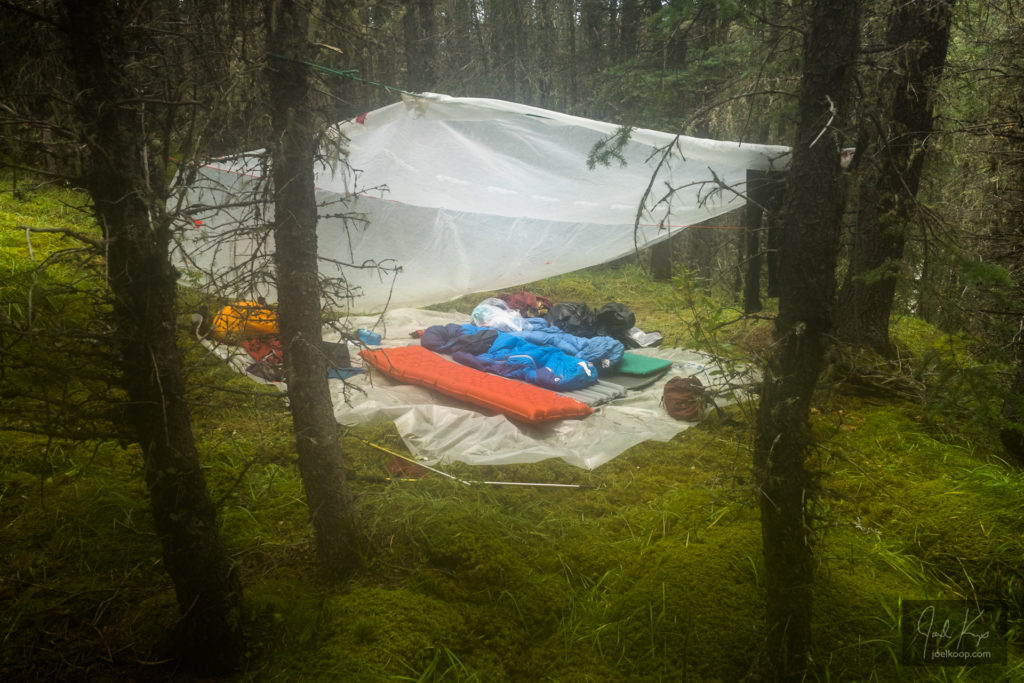
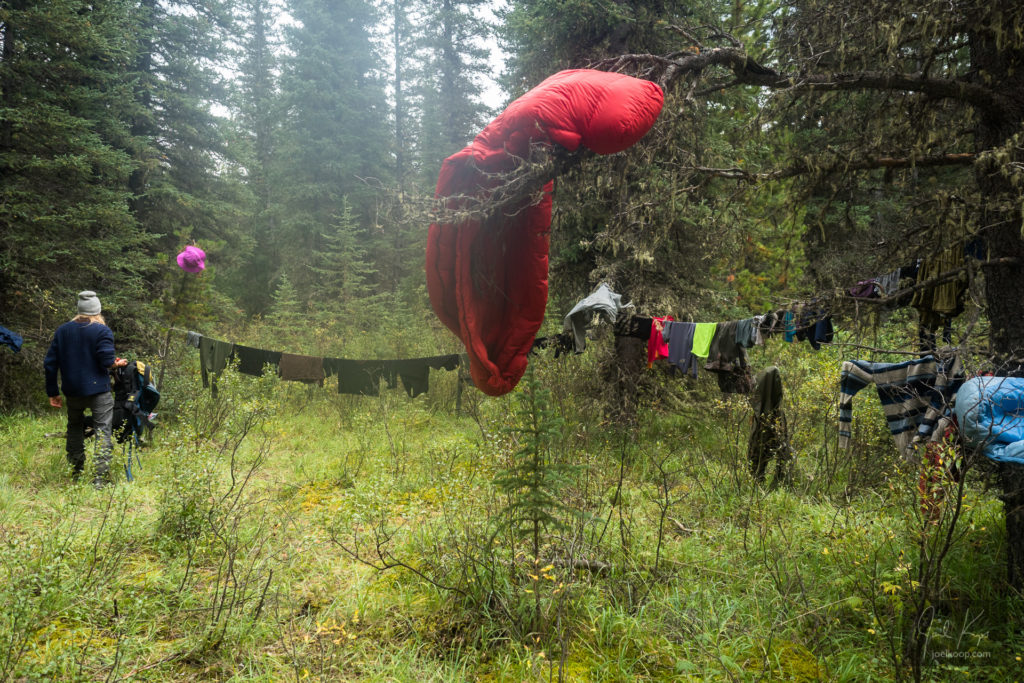
Then it was time for our small group to head off on our own for a couple days. We picked our route and our campsite for the next night, said goodbye to our home for the last day and a half, and headed out.

Despite regular intervals of rain, the fact that there was any sun at all made us pretty happy and the day started out great! We had a long hike ahead of us, but there was a lake at the end of it, and hiking together as a group was a silly and fun affair. At lunch we took off our boots, dried out our feet, and basked in a half hour of sun. It was glorious. After lunch we skipped through meadows, making up songs accompanied by harmonica.

However, the meadows turned into swamp. The songs turned to blues. The skipping turned to slogging. The rest of the day was pushing through mossy swamps up to our knees, briefly climbing steep hills only to find we had to go back down into the swamp. We were soooo happy to finally see the lake.
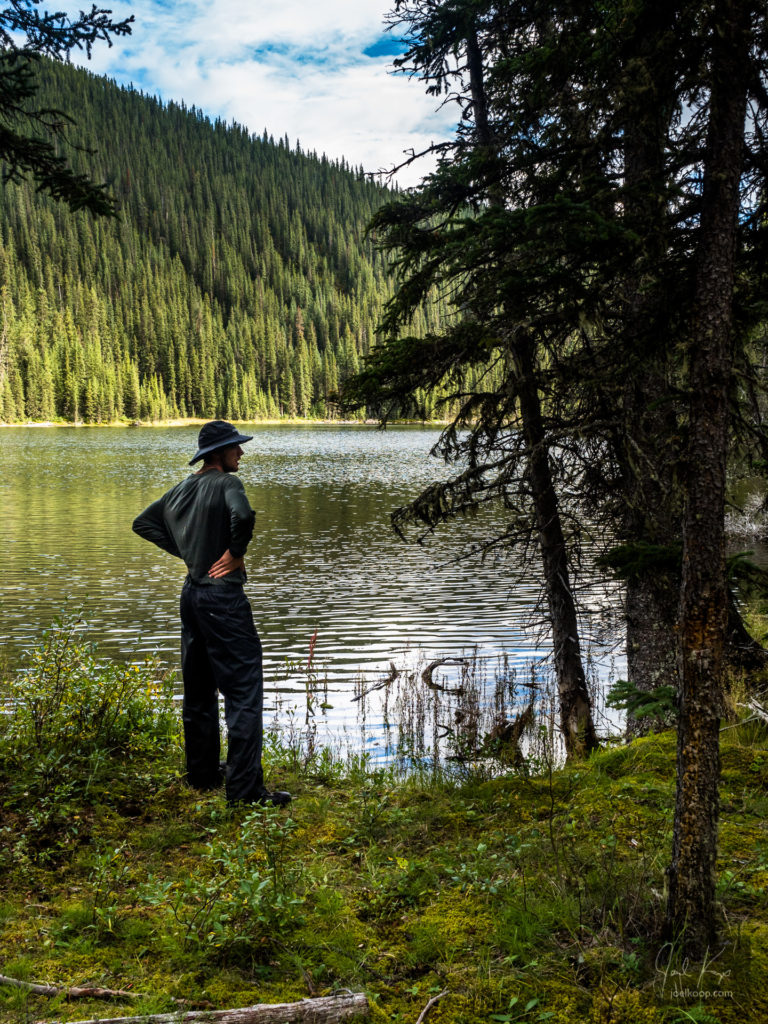
We had a relaxing evening at the lake and slept in the next morning. We woke up to sun for the first time (actually the only time) that trip and water quietly lapping at the shore. We had a leisurely breakfast, packed up, and headed out, changing our route slightly to not lose as much elevation. Crossing the valley above the lake was less swampy than we were worried about. We headed up a south-facing slope of thin pines to gain the ridge and head to our next camp to see everyone again. The hiking was quick and fun, but fallen trees soon slowed us down. It took us longer than expected to get to the next camp, with a steep, mossy decent on the north side of the ridge. After a steeper-than-hoped-for slide down to the river, we crossed and found camp.

It was really good to see the group again. There were hugs, high fives, and stories all around. For the rest of the trip, we would all hike together. We had a good supper with burnt pudding for desert, which kind of tasted horrible but because it was chocolate and we were camping, it was good.

The next morning we all packed up as a large group and started climbing.
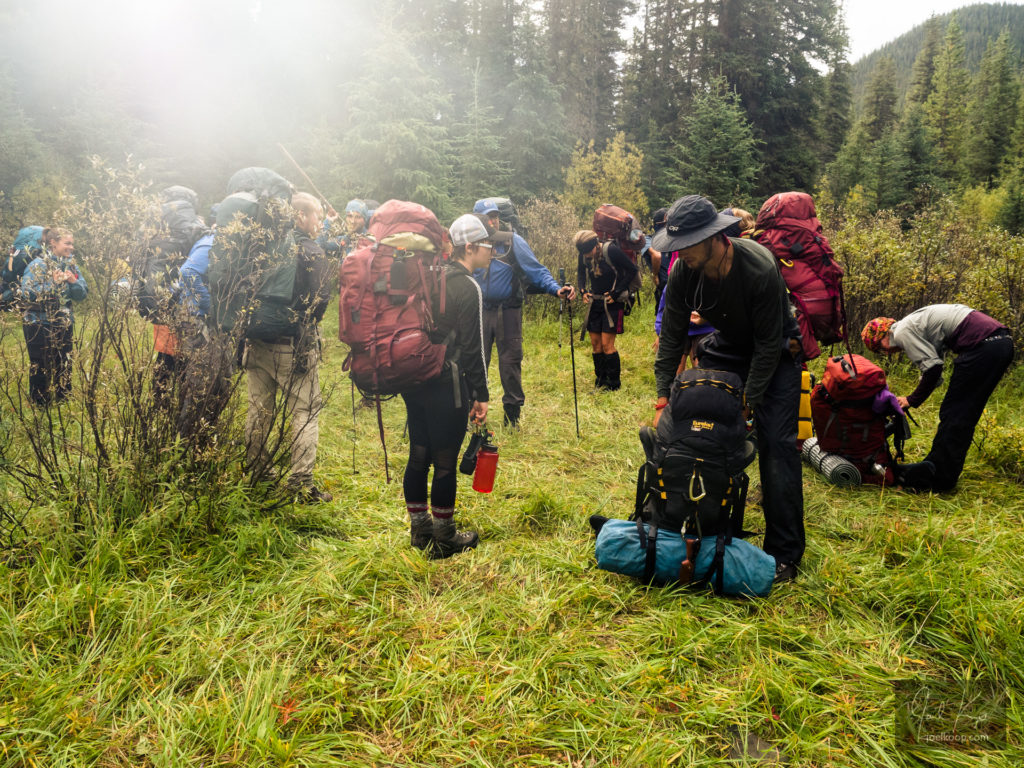
We quickly gained the ridge and had great views. We even got a spot of sun during lunch. But lunch got cut short as clouds started rolling in.
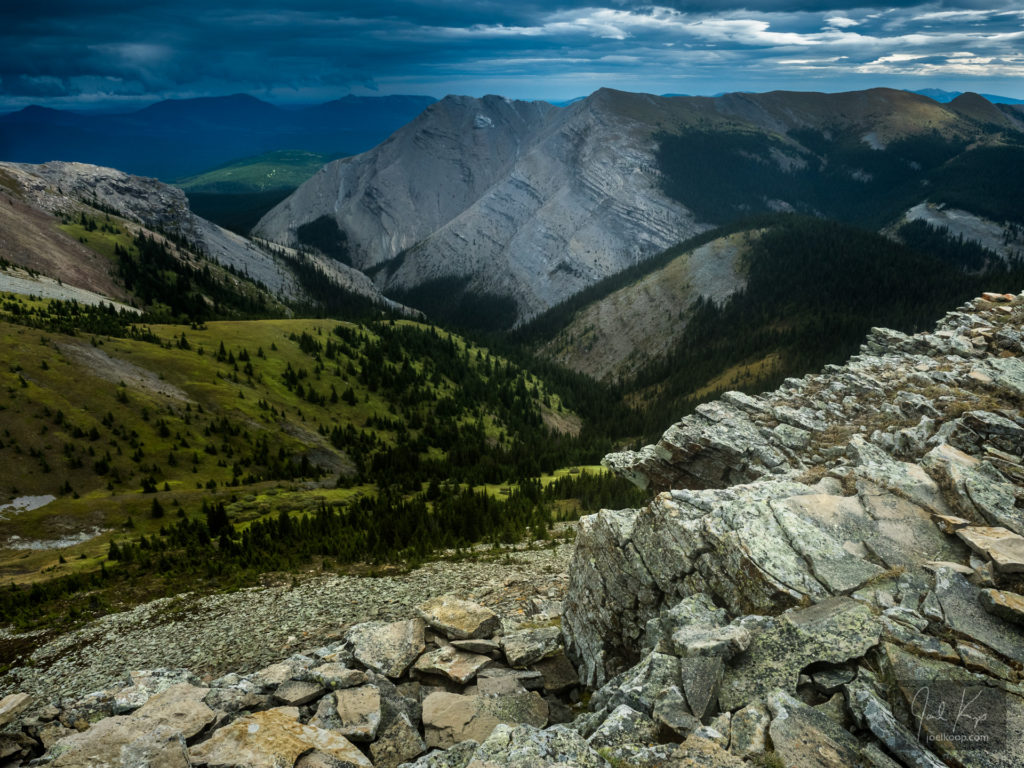
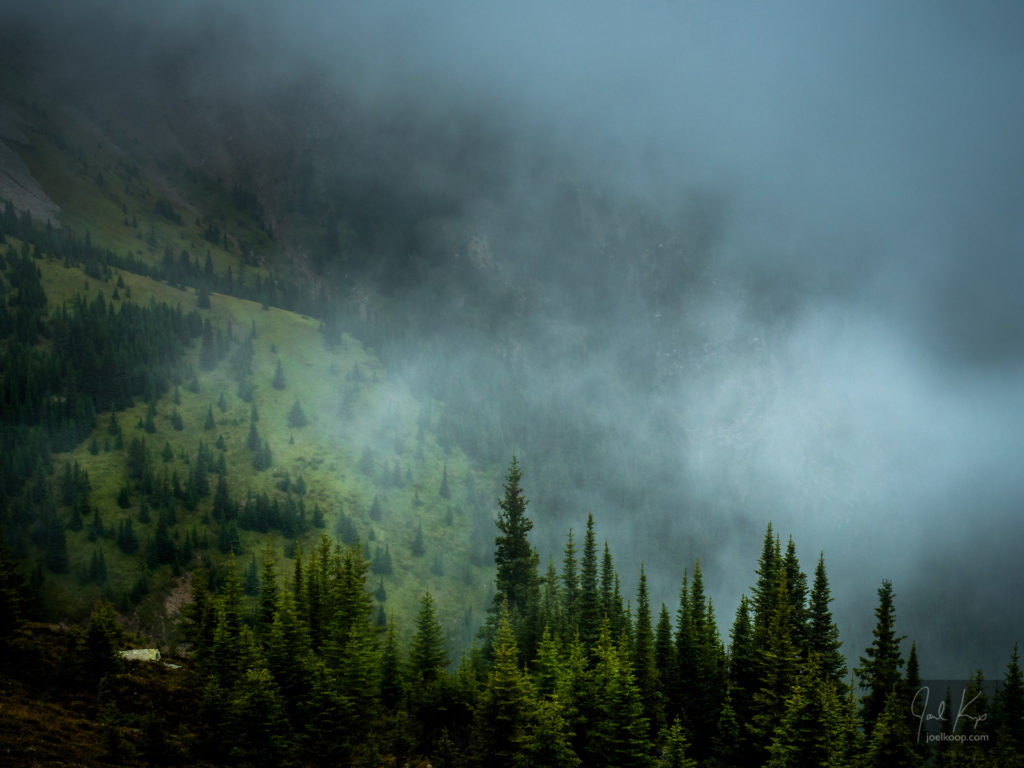
We hiked to another small peak in the rain and fog, and then sat down for an appropriately cold reflection on our trip.
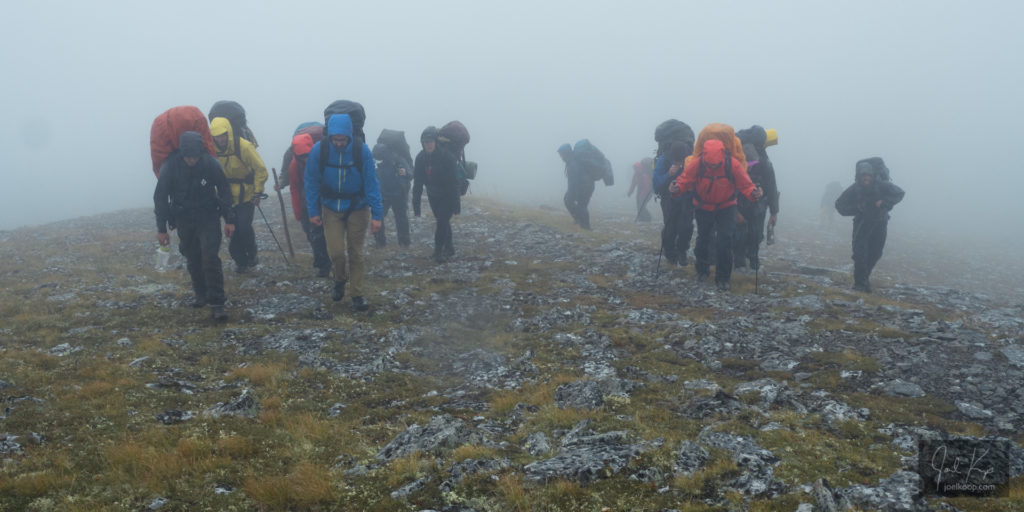
After climbing down in a cold, cutting rain, we found another soggy campsite and had a great evening with the group. We had a potluck and skits or songs from each group, and then climbed under our tarps for the last time. The next morning we packed up and bushwhacked out the last few kilometers to the road where a few people hitchhiked back to get a vehicle.
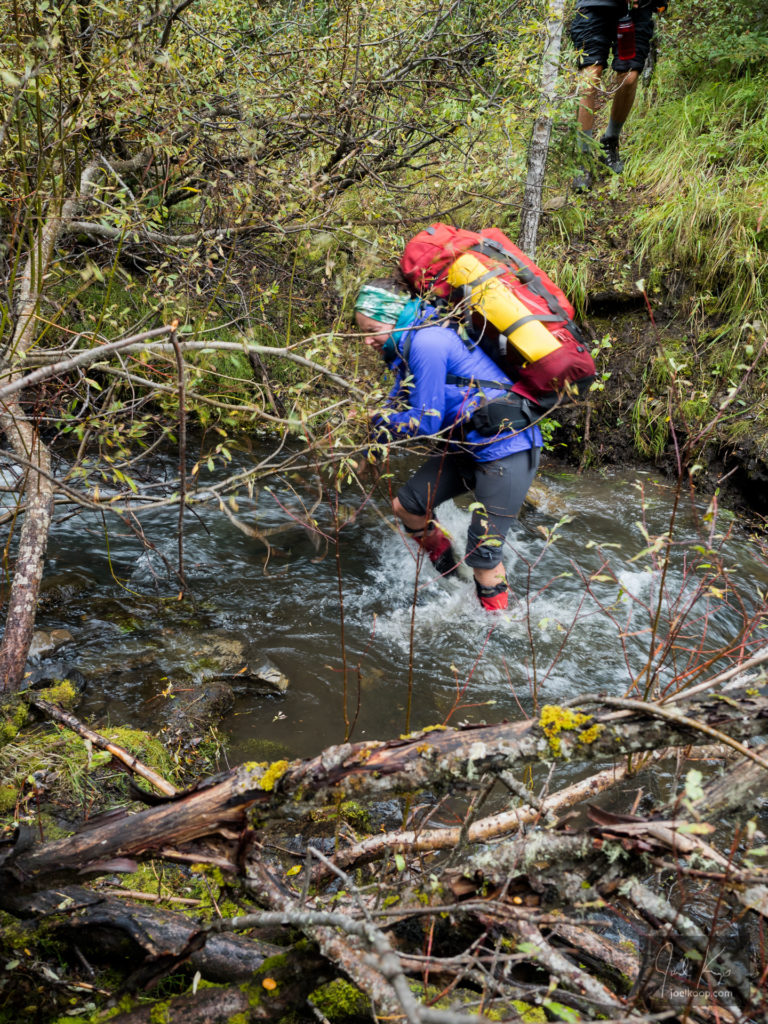
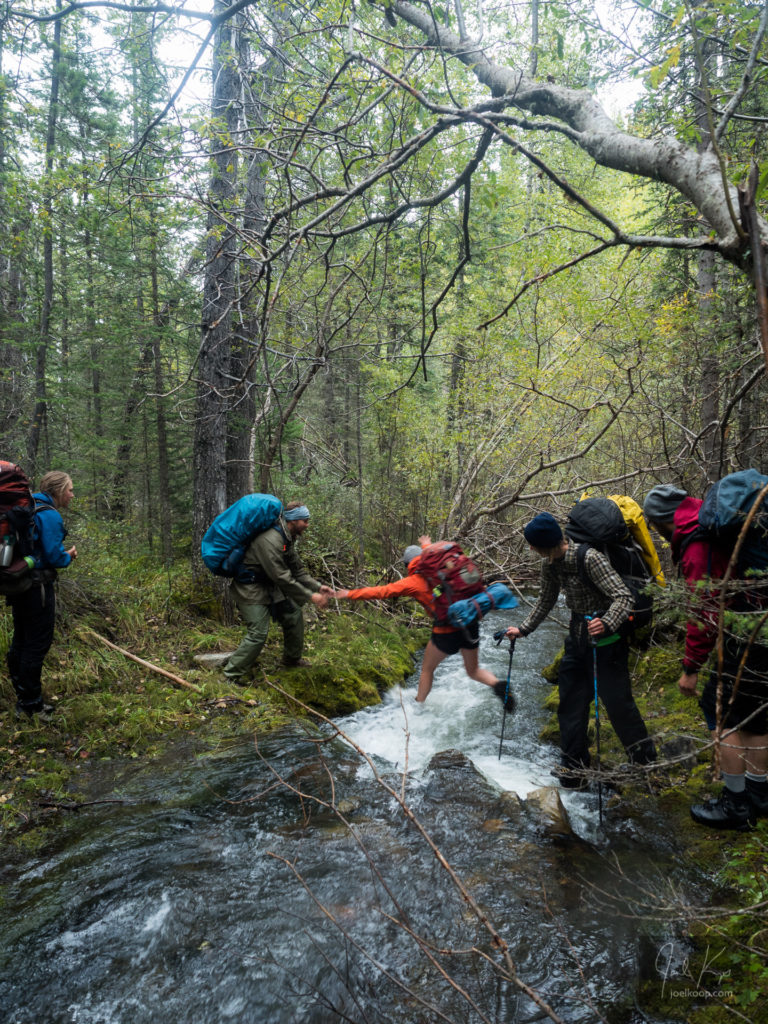
And that’s how it ended, as all trips do, with a “Oh, I guess it’s done. What now?”
